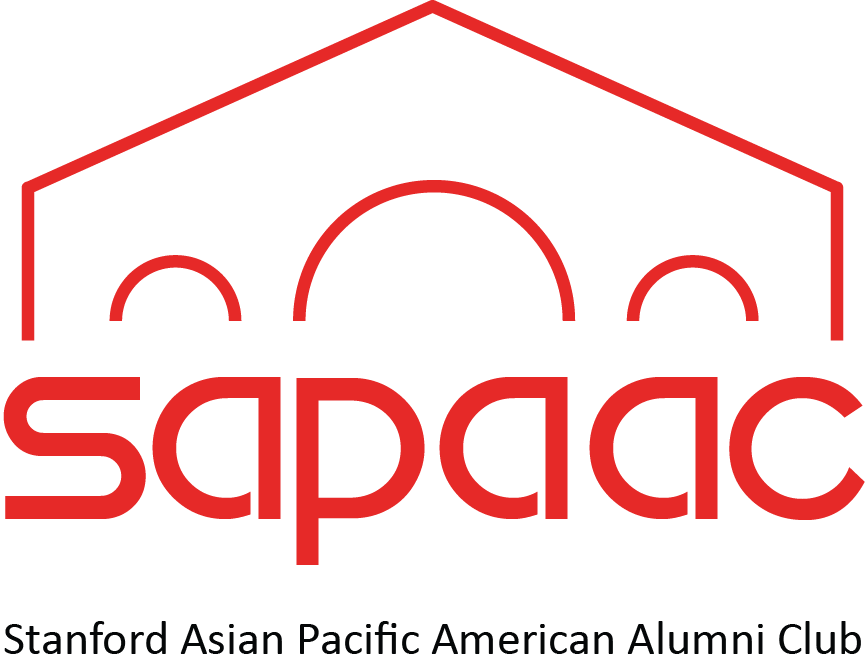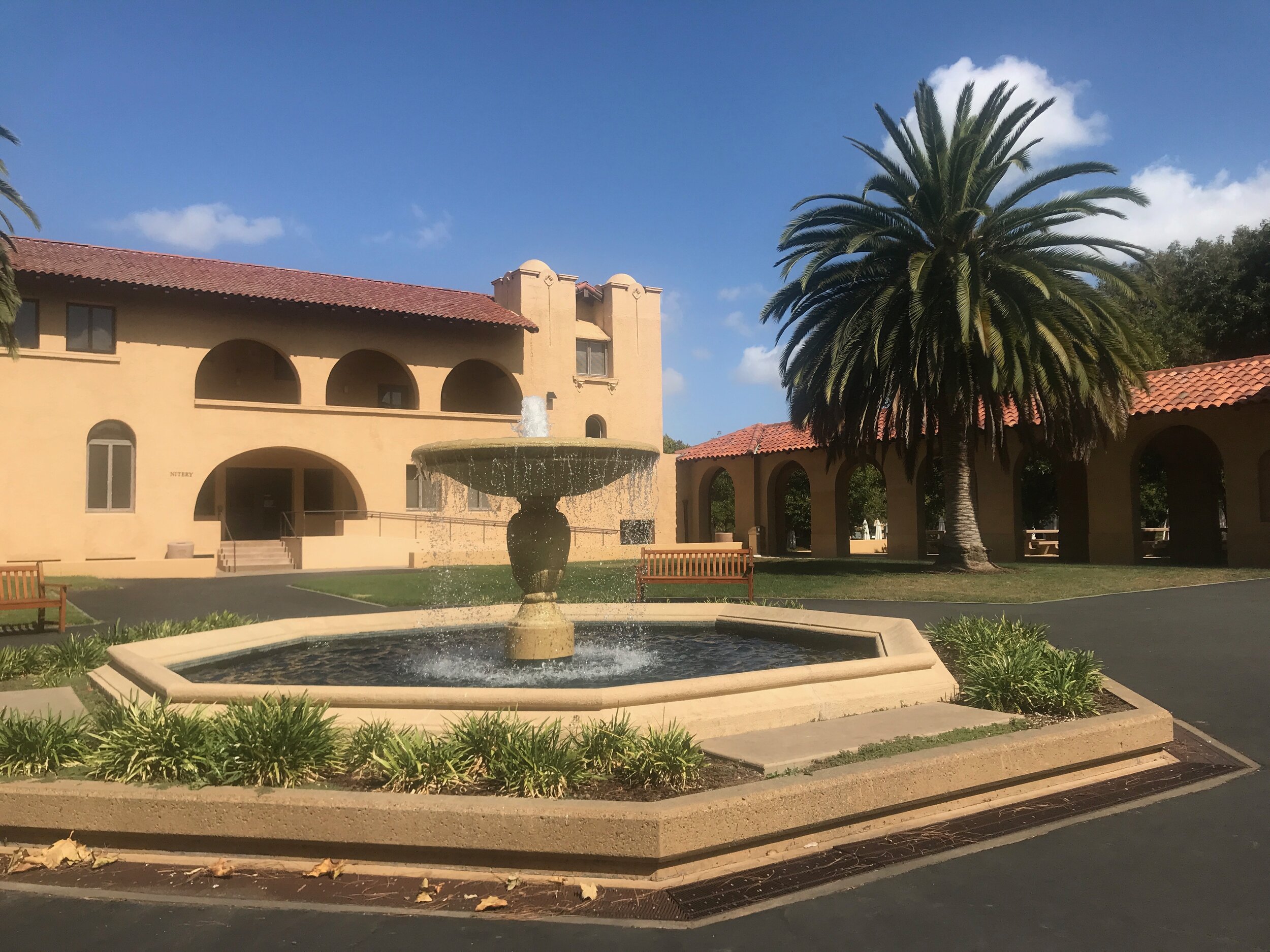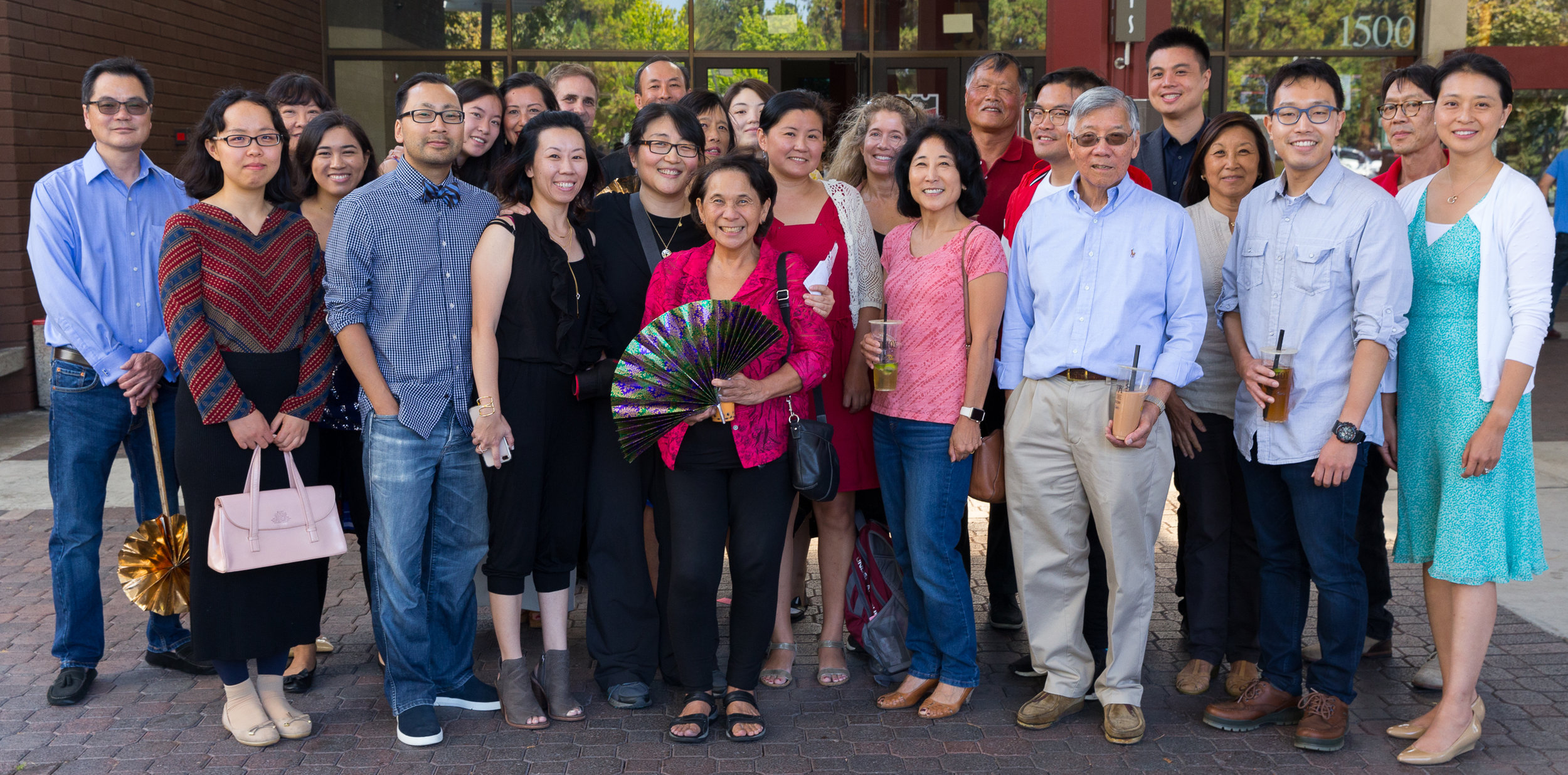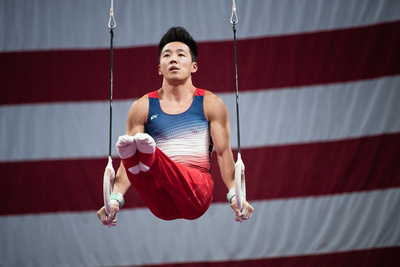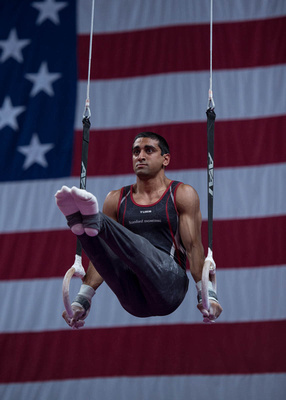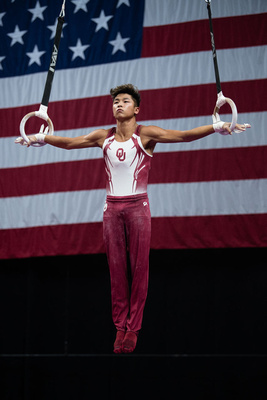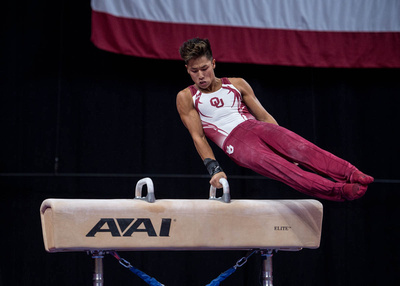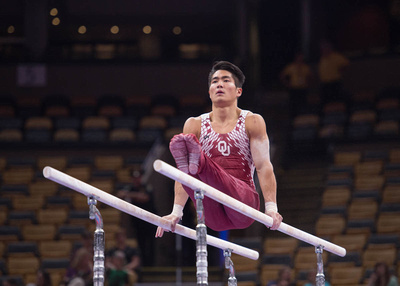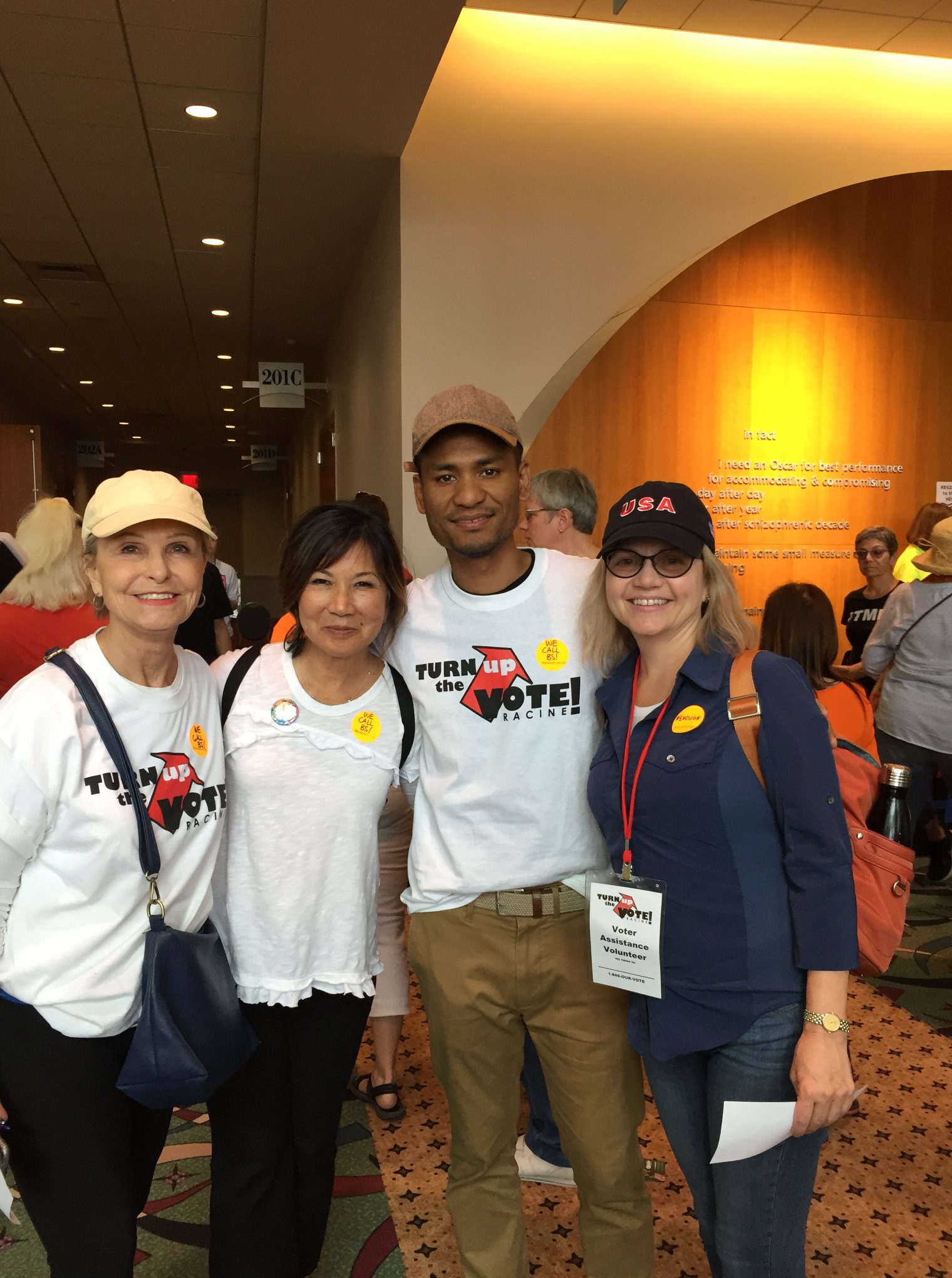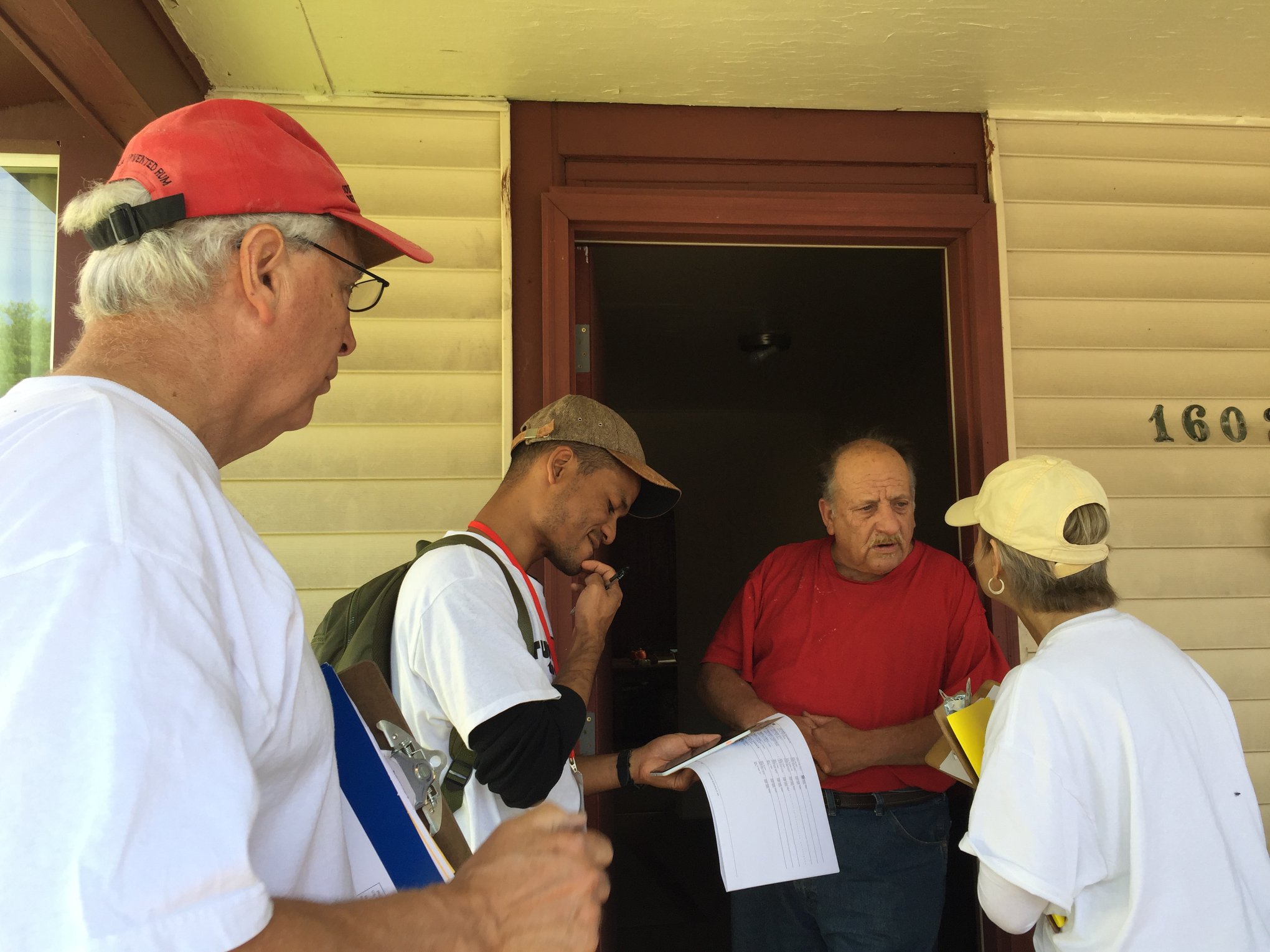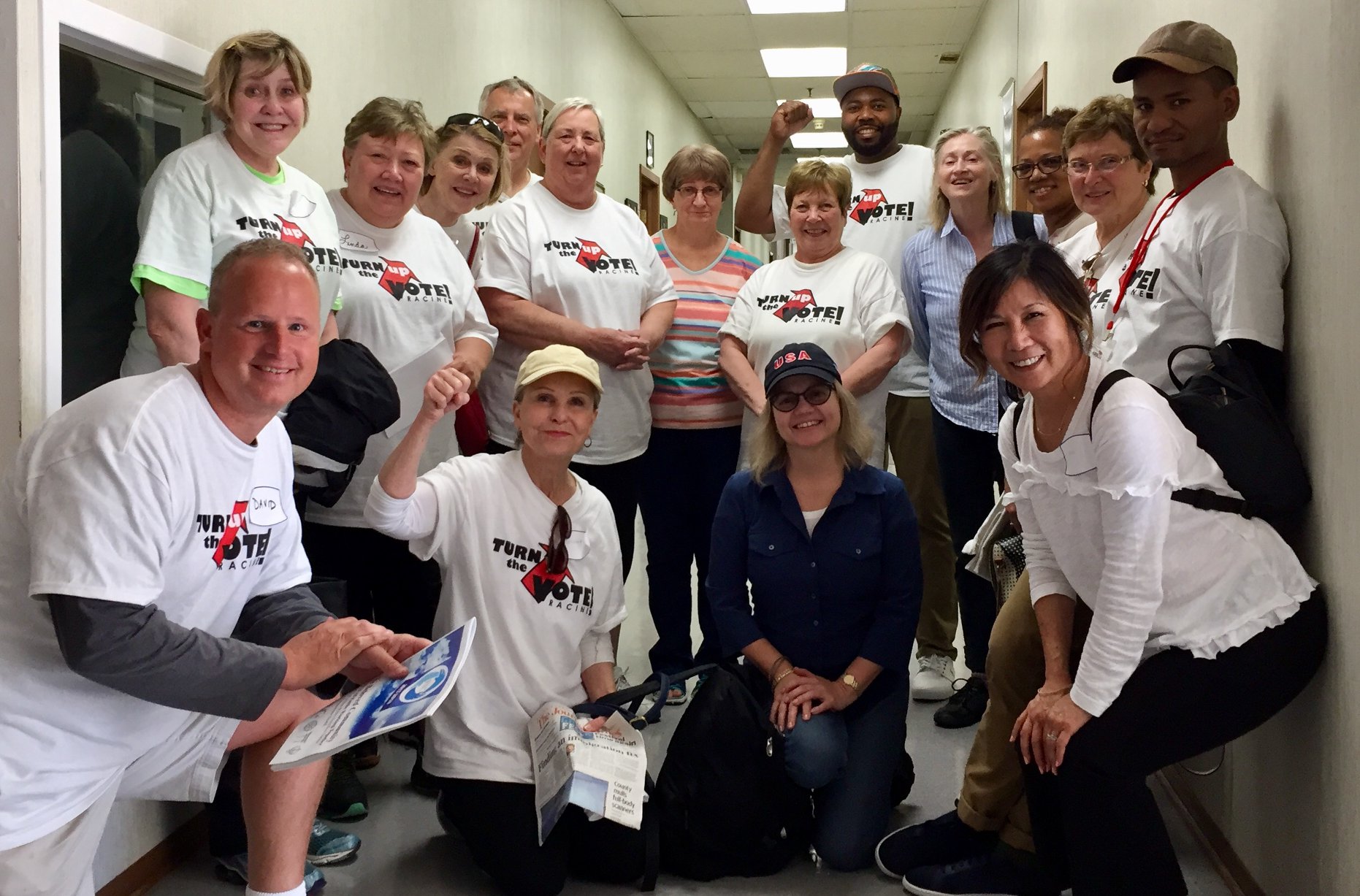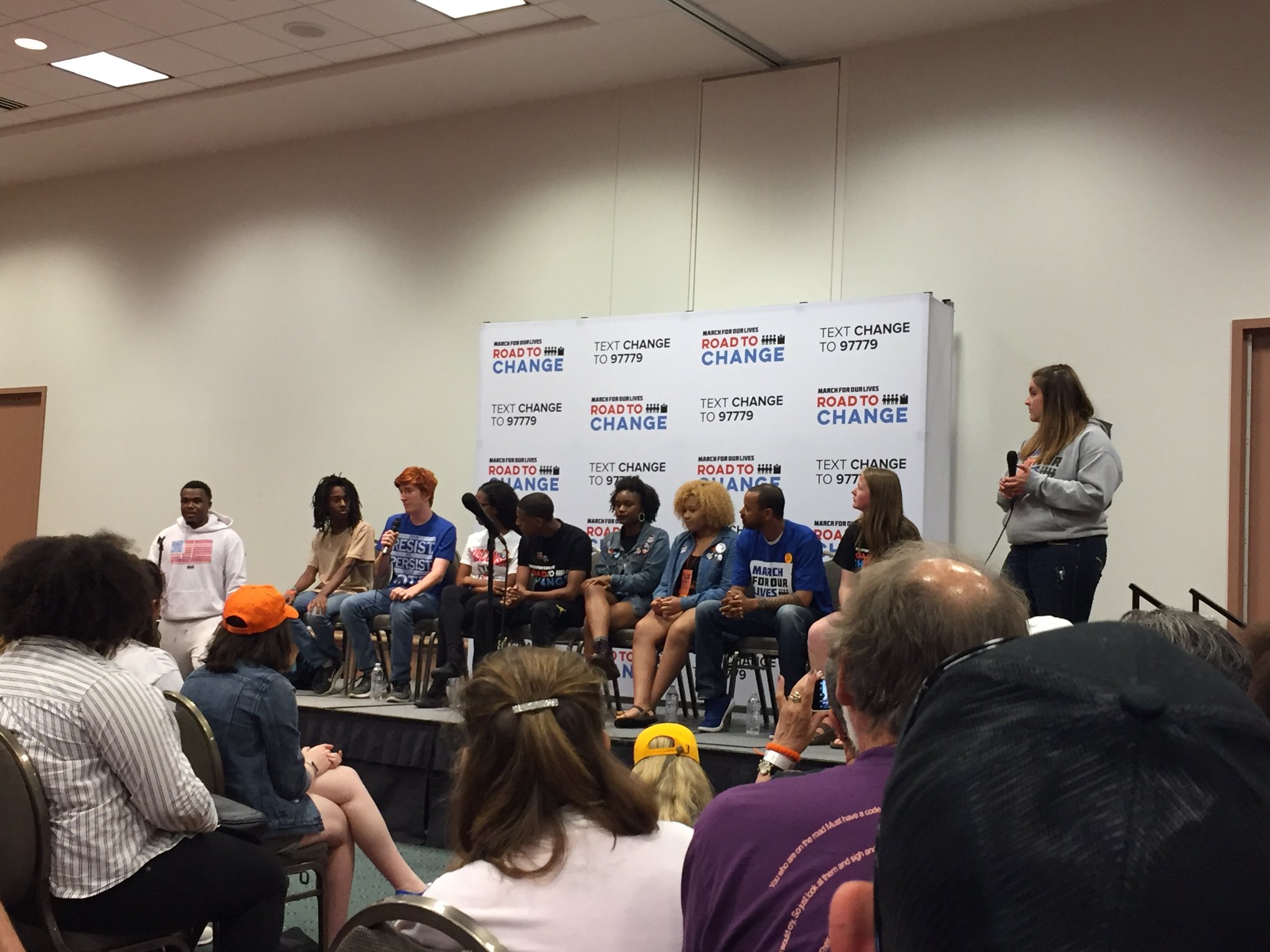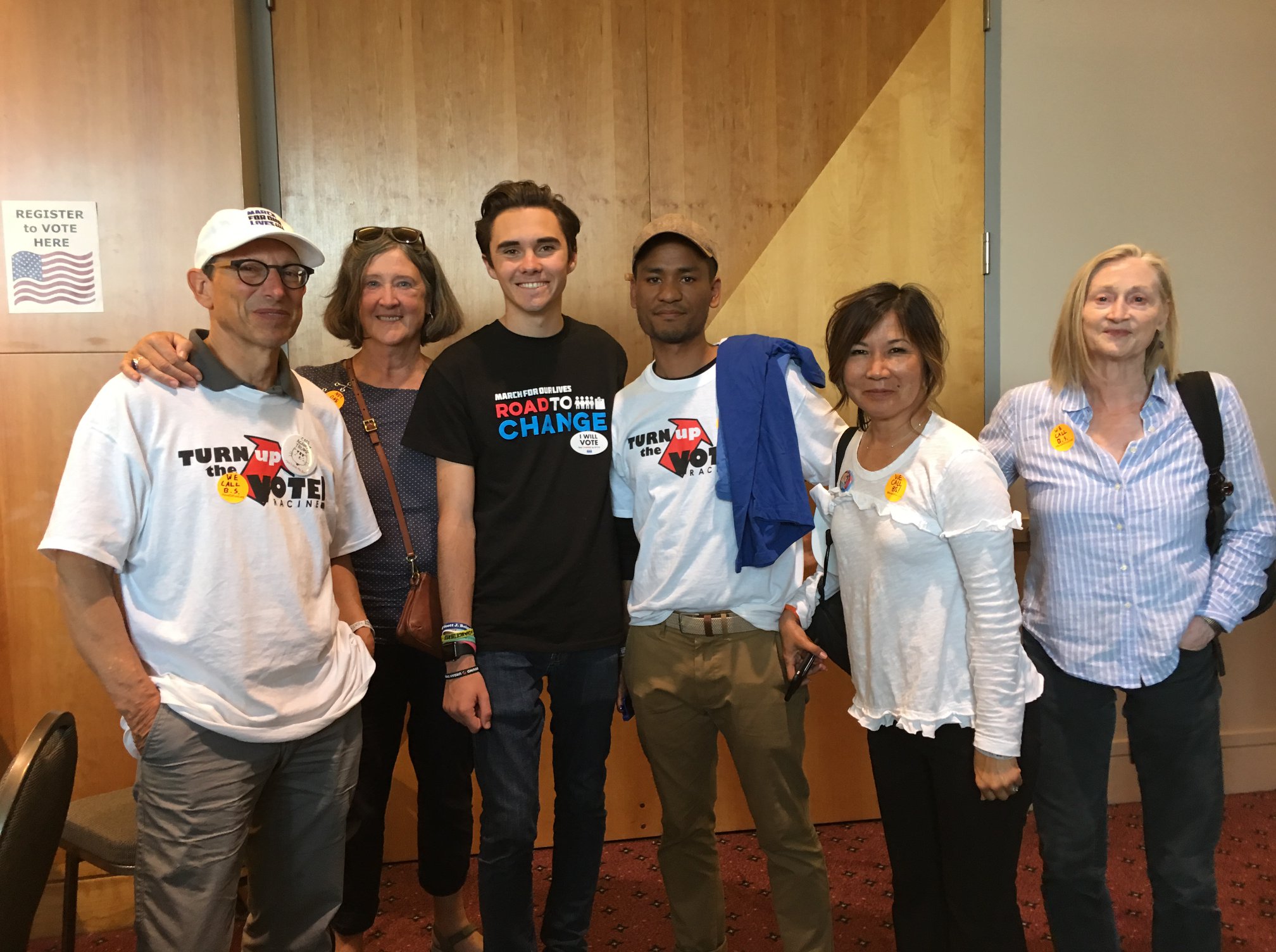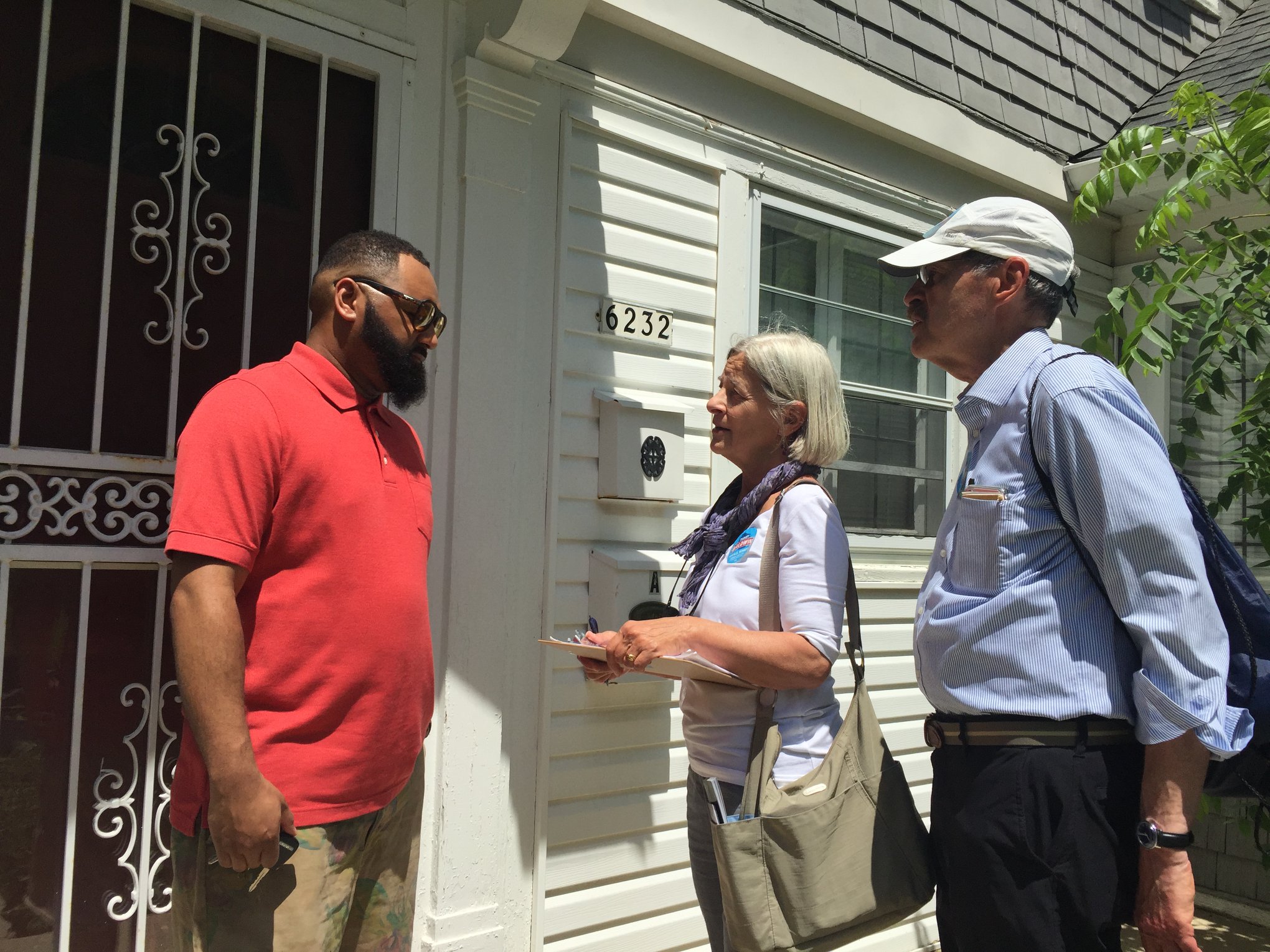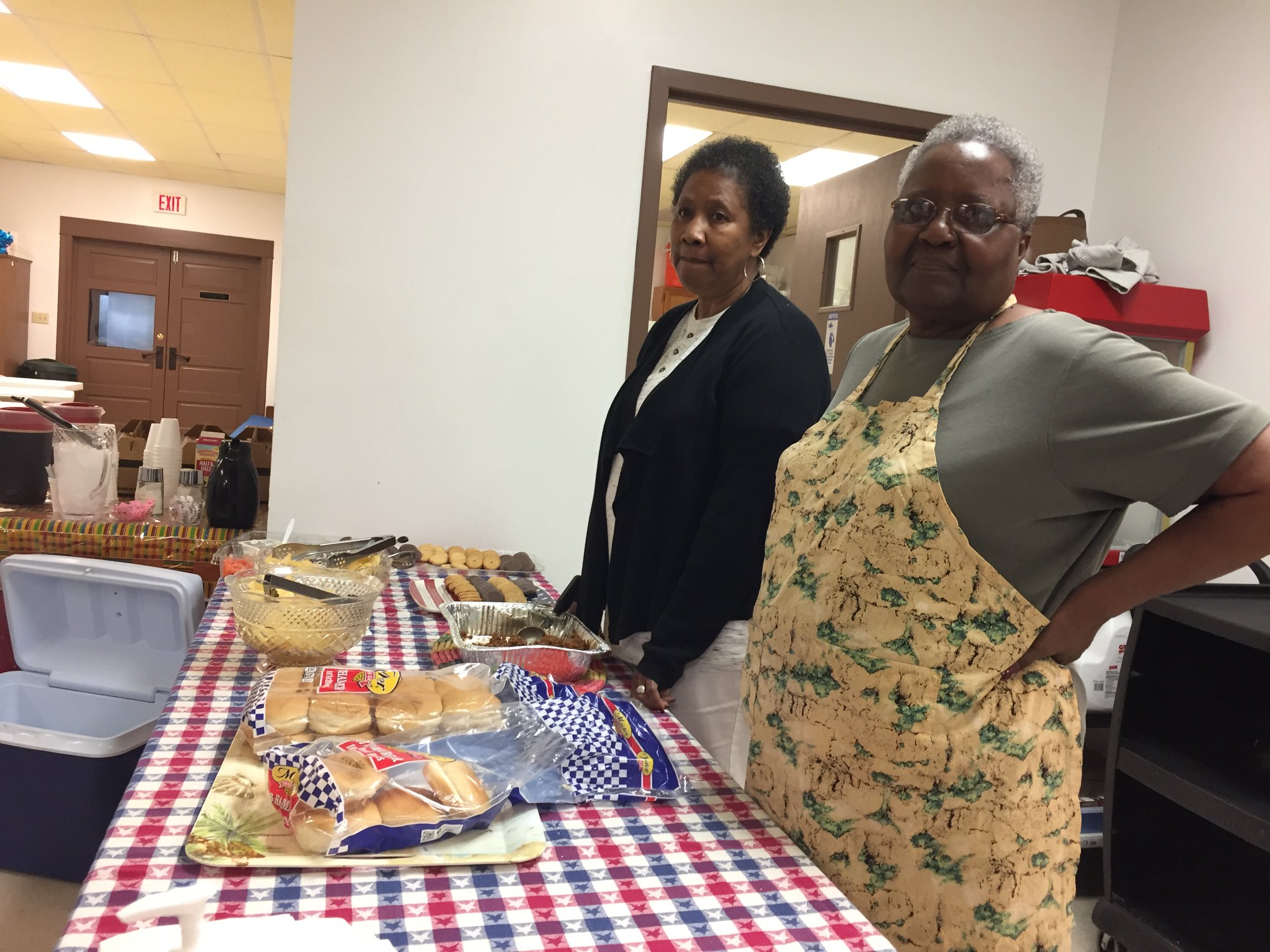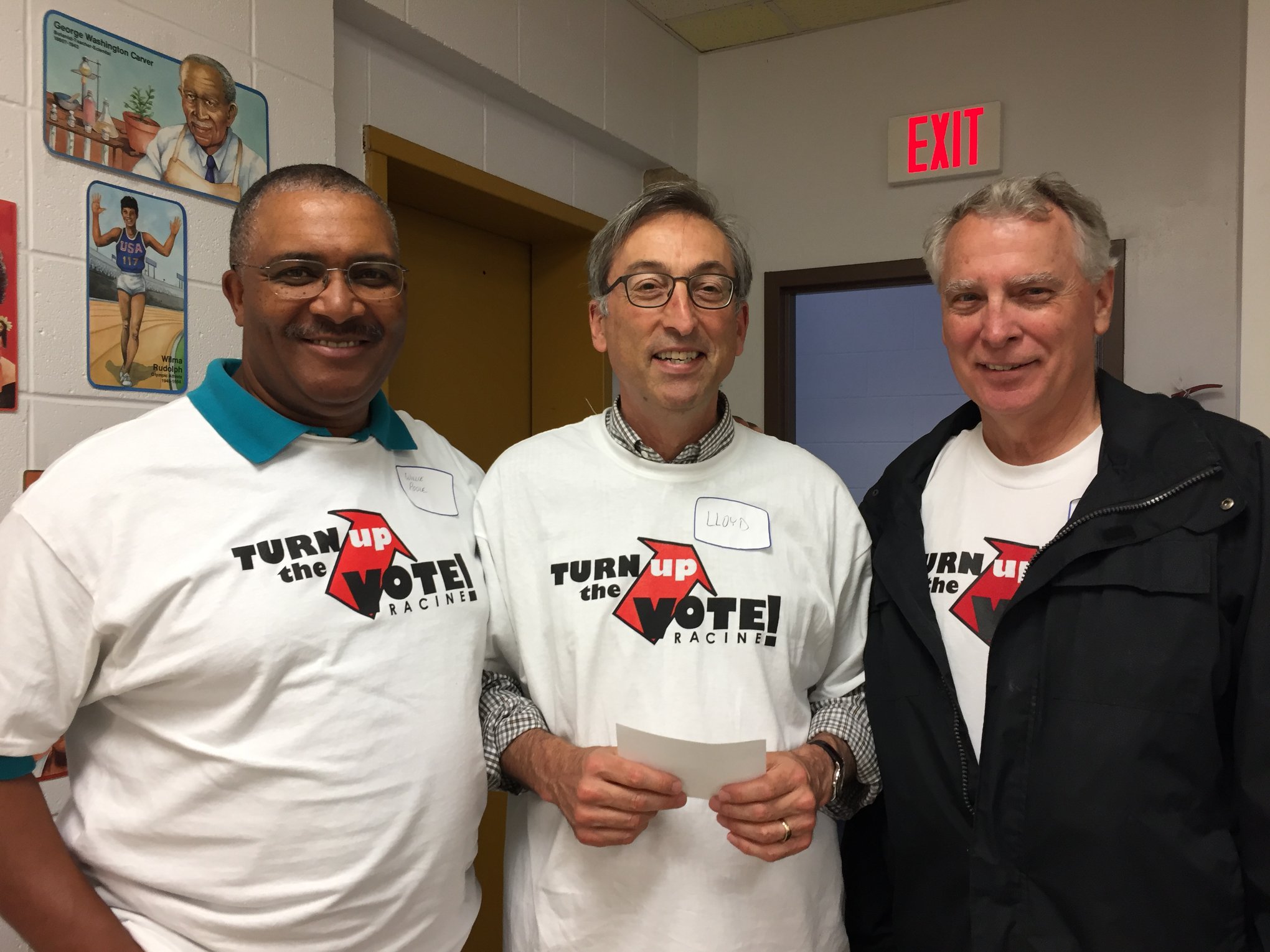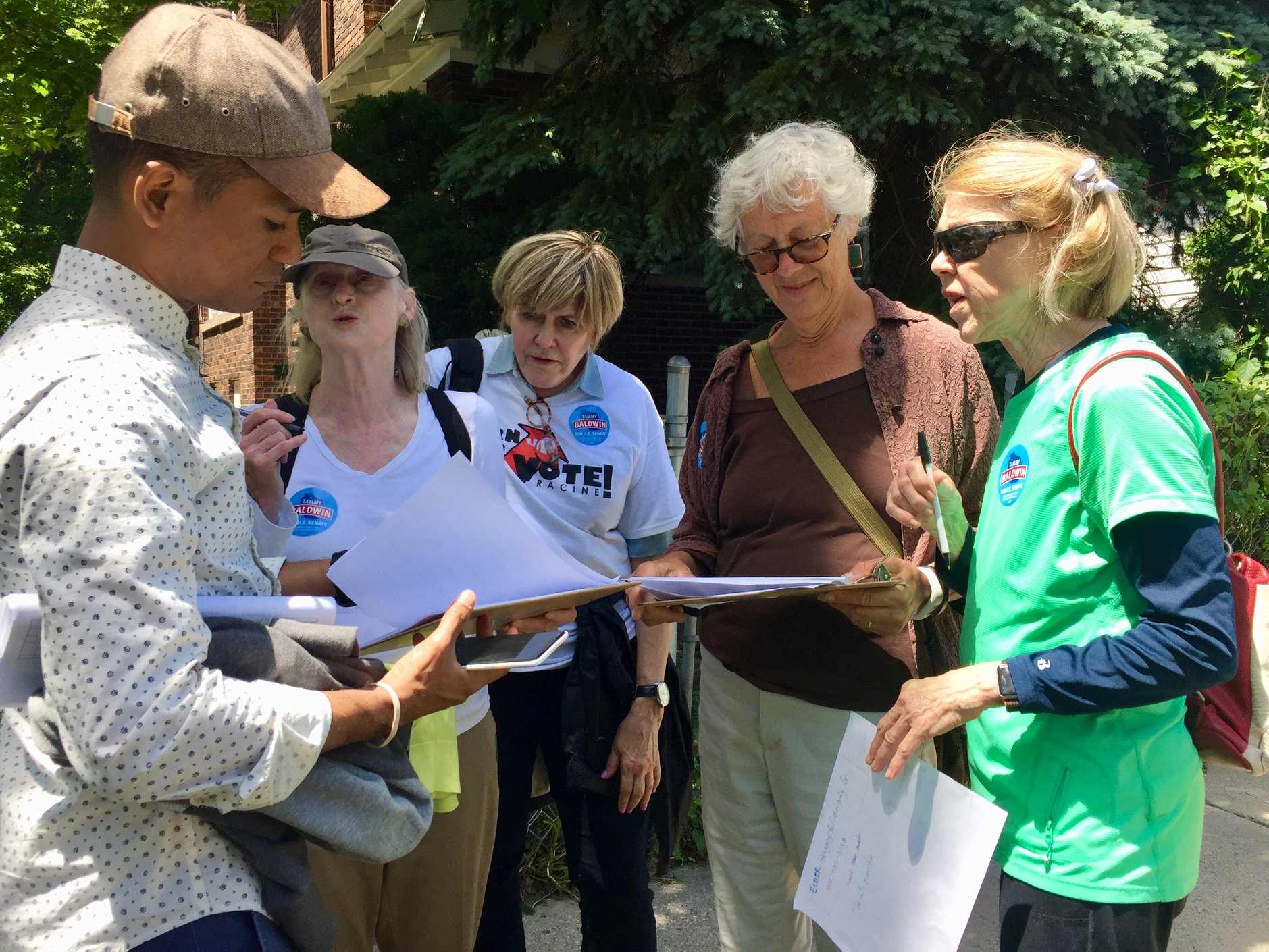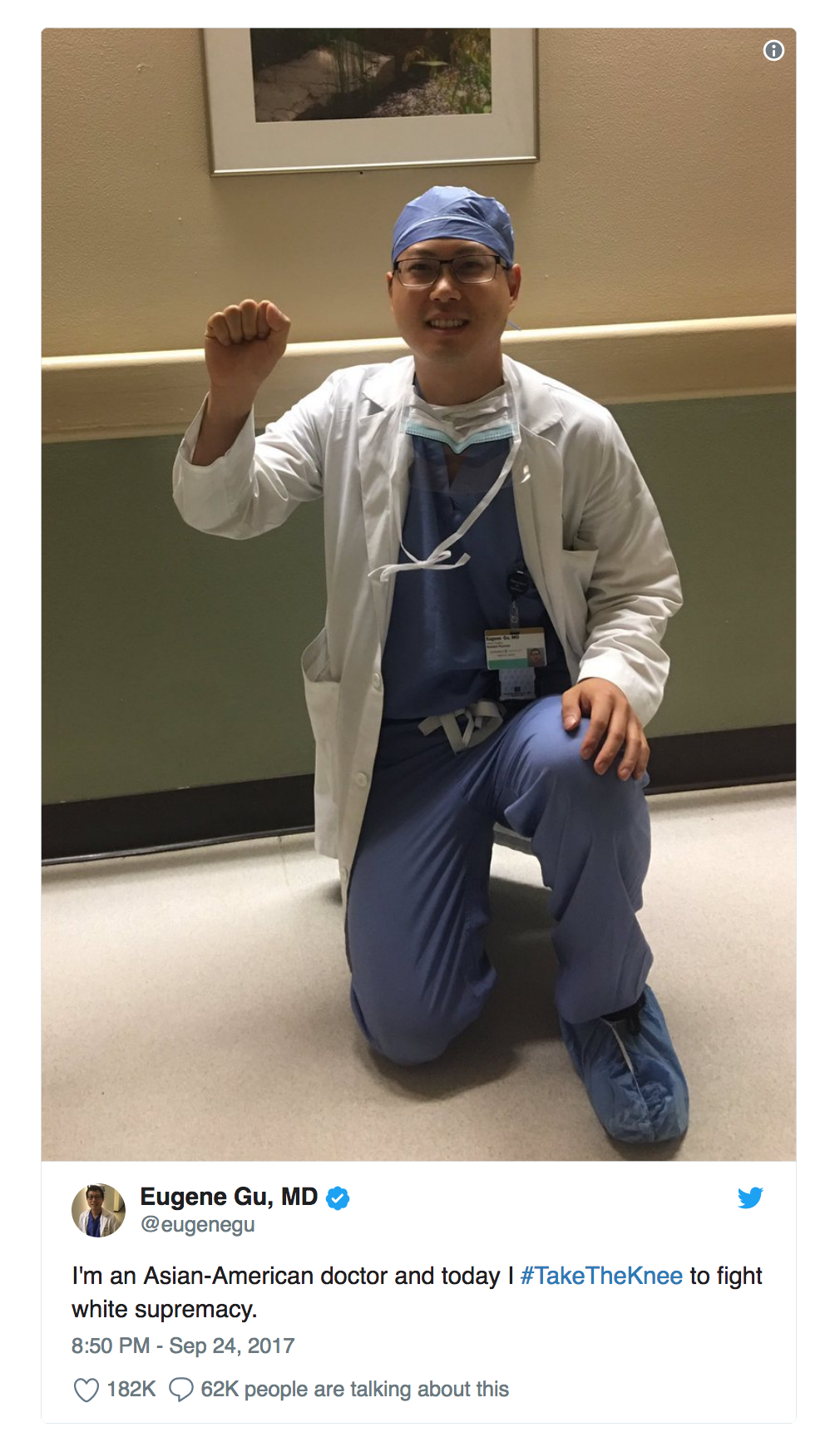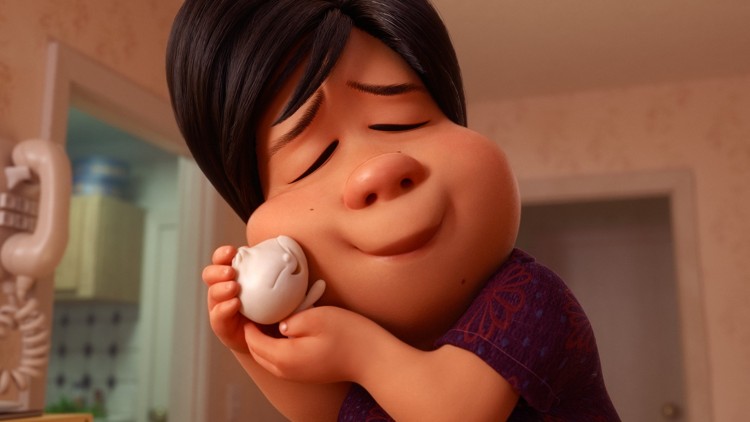Nationwide protests have arisen in response to the terrible murder of George Floyd by a police officer. In these challenging times, diverse Stanford groups are speaking out about pervasive racism, police brutality, and systemic violence against African Americans.
Read more[Board Statement] SAPAAC on the State of Asian American Studies in 2020
Dear President Marc Tessier-Levine, Provost Persis Drell, Vice Provost Harry Elam and Professor Sarah Church, and other University Leaders,
As the organization representing Stanford’s Asian American and Pacific Islander alumni—the university’s largest ethnic minority community—SAPAAC remains highly attuned to student experiences on campus. We wish to highlight the concerns of recent graduates and long-time alumni about the state of Asian American Studies at Stanford. At a stock-take during the global Stanford Asian Pacific American Alumni Summit in 2017, alumni were surprised and dismayed at the lack of progress in securing faculty and resources for the Asian American Studies program, despite its founding two decades prior. The program still cannot hire its own tenured faculty and relies on professors in other departments and part-time lecturers to teach all courses. We are astonished that a university of Stanford’s reputation, in a state as diverse as California, has no full-time instructors housed in Asian American Studies—and cannot even consistently offer an introductory course in the subject.
We saw welcome progress this year when “Introduction to Asian American Studies” was taught at Stanford again, for the first time in a decade. The exceptionally strong enrollment and positive feedback speaks to the demand for these classes. To maintain a thriving program that meets student interest and fulfills an important educational need, courses in Asian American Studies must be scheduled regularly, and taught by engaged, full-time instructors—not only offered on an itinerant basis, where faculty from other departments teach on borrowed time.
We strongly support the student-driven initiative, joined by many alumni, asking the University to create and fund a full-time Asian American Studies lecturer position with a multi-year contract. We also ask the University to step up and empower the program to hire faculty, lecturers, and executive staff to ensure that a core set of classes is offered on an annual basis, so that students who wish to major in, or simply be trained in, Asian American Studies can do so. We do not want to hear any more reports of students being discouraged from majoring in this field due to lack of classes.
The Provost’s Statement on Diversity and Inclusion and the launch of the IDEAL dashboard in 2019 were encouraging steps in the right direction that highlighted your administration’s renewed commitment to diversity and inclusion. We hope you will take action to match your inspiring words by providing meaningful support to Asian American Studies.Racist incidents on Stanford campus this past year, and the worrying increase of hate crimes witnessed across the country during the pandemic show that ethnic studies programs—including Asian American Studies—are more important than ever. These disciplines illuminate our country’s history and social fabric, and reveal how people of diverse ethnicities and ancestries have always been an integral part of the story of America, a nation of immigrants.
As a leading university based in the San Francisco Bay Area, where the movement for ethnic studies originated, Stanford has the potential to cultivate a flourishing Asian American Studies program that befits a leading institution of higher education—and that is commensurate with the enormous enthusiasm and ongoing contributions by Asian American students and alumni to university life. We urge Stanford to fulfill this collective aspiration and live up to its commitment to genuine diversity.
Sincerely,
Concerned Members of the Stanford Asian Pacific American Alumni Community
Solina Kwan, SAPAAC President
John Chang, SAPAAC Board Member
Mo Fong, SAPAAC Board Member
Kevin Hsu, past SAPAAC President
Dan Kojiro, SAPAAC Board Member
Lan Le, SAPAAC Board Member
Jay Wang, SAPAAC Board Member
See the companion petition expressing concern about Asian American Studies that has collected signatures across generations of Stanford alumni
Stanford Students Supporting Workers' Rights - Call for Action Under Pandemic
Students, faculty and staff are organizing to protect economically vulnerable members of the Stanford community. They have raised their collective voices to urge the university administration to exercise empathy in this pandemic by providing full benefits and pay to all service workers through the end of the school year.
Throughout the Spring, Stanford Students for Workers’ Rights have advocated for workers on the Stanford campus. Due to their actions, the issue has been covered in local, regional and national media. They have reached out to the alumni community and SAPAAC with the following information.
About the Campaign
“In its response to COVID-19, Stanford has laid off hundreds of subcontracted workers since March, refusing to pay all service workers and refusing benefits to protect them. For the subcontracted workers who are still employed, they are not offered paid sick leave and only had guaranteed pay until April 15, not through the end of the spring term. Stanford Students for Workers' Rights have demanded that Stanford guarantee pay continuance and health benefits for all service workers.
Stanford later stated on April 14 that they would commit to pay directly employed workers until June 15 and "support" income and benefits for subcontracted workers.
However, on April 22, union representatives said that the administration's "support" has either been benefits without pay, legal counsel without pay, or simply nothing for different groups of subcontracted workers. Laid-off workers have not received pay since they were fired, and workers are still not receiving hazard pay or additional sick leave. Stanford is still not being accountable to its promises and commitment to its workers.”
How can alumni support by taking action? Stanford Students for Workers’ Rights and the broader coalition of faculty and staff supporting the campaign have suggested the following options for alumni willing to take part:
Join a No-Donation Pledge for graduating seniors, alumni, and donors to withhold donations until Stanford provides compensation, protection, and communication to all workers
Sign a Petition for Stanford to commit to pay continuance for all service workers through Spring Quarter
Visit a GoFundMe to support all laid off Stanford service workers at this time
Purchase a Sticker with all proceeds from sales going toward the fund to support laid off workers
Add your stories to a Form where the community shares service workers have positively impacted your life
You can follow the campaign on Twitter (@stanford_swr), Instagram (@stanfordswr) and Facebook (Stanford Students for Workers' Rights). You can also participate in their Twitter campaign with this guide.
Coverage in the Stanford Daily, Palo Alto Online and The Washington Post
[Open Letter to Stanford] Contracted workers deserve the same benefits as your ‘regular’ employees (Stanford Daily, March 23)
https://www.stanforddaily.com/2020/03/22/stanford-contracted-workers-deserve-the-same-benefits-as-your-regular-employees
Stanford, unlike other schools, stiffs its subcontracted workers (Stanford Daily, March 29)
https://www.stanforddaily.com/2020/03/29/stanford-unlike-other-schools-stiffs-its-subcontracted-workers
Stanford commits to pay continuation for regular employees through June 15 (Stanford Daily, April 14)
https://www.stanforddaily.com/2020/04/14/stanford-commits-to-pay-continuation-for-regular-employees-through-june-15
Following public pressure, Stanford reverses decision on pay for contracted service workers (Palo Alto Online, April 15) Undergraduate students led advocacy campaign for cooks, janitors laid off during the shutdown
https://www.paloaltoonline.com/news/2020/04/15/following-public-pressure-stanford-reverses-decision-on-pay-for-contracted-service-workers
Stanford’s stated support for subcontracted workers has been misleading, union says (Stanford Daily, April 24)
Julián, Joaquin Castro (‘96) join chorus calling for expanded worker protections
https://www.stanforddaily.com/2020/04/24/stanfords-stated-support-for-subcontracted-workers-has-been-misleading-union-says
Students, union say Stanford refusing to honor pledge to help displaced contract workers (Washington Post, April 28)
Student activists and union leaders say Stanford University is reneging on a promise to help laid-off janitors and dining staffers employed by independent contractors.
https://www.washingtonpost.com/education/2020/04/23/students-union-say-stanford-refusing-honor-pledge-help-displaced-contract-workers
"Discrimination is an Occupational Hazard for Physicians of Color" says Asian American doctor
Dr. Crystal Zheng (‘10, MA ‘11), an infectious diseases physician at the Tulane University School of Medicine, reflects on practicing medicine during the pandemic and the racial prejudice that Asian American doctors, nurses, and patients have faced in these difficult times.
Even before the pandemic, Dr. Zheng observes:
“No matter my cultural identity or professional achievements, I am always shadowed by jokes about my eyes and questions like, ‘But where are you from from?’
In my first week as a medical intern, my supervising physician, also Asian American, overheard a patient refuse my care while calling me a racial slur. With a knowing hint of shared experience, he whispered, ‘You have to have thick skin to go into medicine.’
I now consider discrimination an occupational hazard for physicians-of-color. As a minority in this country, I quickly learned that ignoring racist microaggressions is an essential survival skill.”
Now, with the pandemic in full swing, she shares her concern about an increasing number of racist actions targeting Asians in the United States (which included a hate crime committed against two of her colleagues at Tulane):
COVID-19 has intensified my racialized experience as an Asian American. I have received taunts of “Coronavirus!” and been questioned about my infection status by Uber drivers. With President Trump fanning the flames of xenophobia by using the term, “the Chinese virus,” verbal and physical abuse towards Asian Americans have dramatically increased.
Nationwide, nearly 1,500 cases of discrimination towards Asian Americans have been reported in one month alone. Asian Americans have been abused on sidewalks, grocery stores, and subways. We have been denied services, yelled at, spat on, beaten, and stabbed. We have been discriminated against by our neighbors, our classmates, and even our COVID-19 patients. Like all healthcare workers on the frontlines, Asian American physicians and nurses worry about the risk of infection to ourselves and our families. Meanwhile, we simultaneously have to worry about a second and arguably more pernicious fear.
Read her article in full on New Orleans area’s first nonprofit, nonpartisan public-interest newsroom, The Lens:
I’m an infectious disease doctor and I’m afraid to go to work (and it’s not because of Coronavirus) (The Lens, May 5)
You can also read SAPAAC’s open letter to the White House about taking a stand to protect Asian Americans from coronavirus-related discrimination (SAPAAC.org, April 5)
Alumni Letter to the White House on anti-Asian sentiment during COVID-19 pandemic
Dear Mr. President:
We are the Stanford University Asian Pacific American Alumni community. The current coronavirus pandemic outbreak is causing much fear among the American population. In times like these, some citizens will, unfortunately, look to scapegoat others and direct anger and violence towards them.
Because the outbreak initially occurred in a major city in China, and spread from there to much of the world, some misguided people have already been mistakenly directing their fear and anger toward Chinese Americans, or Asian Americans in general (or even those simply perceived to be Asian). Numerous incidents of harassment and physical assaults on Asians have already occurred around this country.
In recent statements, you have frequently referenced the coronavirus as a “Chinese virus,” or a “China virus,” defending this label as an accurate depiction of the origin of the virus, and as a defense against the false claim that the U.S. military may have brought the virus to China. However, such rhetoric also encourages others to blame all people of Chinese ancestry, and even Asians in general, for the misery caused by the coronavirus outbreak.
The U.S. Centers for Disease Control (CDC) cites World Health Organization practices in naming new human infectious diseases, which suggests not formally calling diseases by geographic, country, cultural, or economic sector names, to avoid stigma against a specific population. As of March 25, 2020 the CDC itself stated: “Fear and anxiety can lead to social stigma, for example, towards Chinese or other Asian Americans...Stigma hurts everyone by creating more fear or anger towards ordinary people instead of the disease that is causing the problem.”
Racially-motivated harassment and violence against Asians in the United States has already repeatedly occurred, even during the mere infancy of the viral outbreak. As we head into the worst of the pandemic in the weeks to come, mass unemployment, hundreds of thousands of illnesses and hospitalizations, and potentially hundreds of thousands of deaths will occur here in the United States. In such trying and difficult circumstances, desperation and anger will increase exponentially, greatly elevating the risk of more frequent and more serious harassment and assault directed against Asians living in the United States.
We therefore ask you, Mr. President, going forward, to continue to no longer refer to the coronavirus as the “Chinese virus,” or the “China virus.” We are not asking for an apology, nor looking to assign blame for past racist incidents. Indeed, we appreciate your comments on March 23, 2020, condemning virus-related harassment of Asian Americans. We ask that you continue in this positive direction by actively discouraging misguided elements of our society from taking out their fear and anger on innocent Asians living in this country. Thank you for your consideration.
Sincerely,
Stanford University Asian Pacific American Alumni
Many thanks to SAPAAC member Girard Lau, ‘81, for initiating this statement.
Japanese American Internment: An Apology from the State of California
The California legislature passed a resolution formally apologizing for the state’s role in imprisoning Japanese Americans during World War II. Under order of President Franklin D. Roosevelt in February 1942, the U.S. government forced more than 120,000 people of Japanese ancestry into ten camps across the Western states.
Read moreOpen Letter to a Burned-Out Intern
Dr. Sonia Singh ‘08, a physician and Stanford alumna, has written a letter to young doctors joining a profession with a hectic schedule, grueling work hours, and patients’ lives on the line—all of which can contribute to a feeling of burnout.
Read more[Call to Action] Students Hold Stanford Accountable for 2035 Development Plan
Can a future Stanford play a positive leadership role in the Bay Area through creative, sustainable, and equitable use of land and responsible real estate development? (Image: The fountain outside Old Union, September 2019)
Stanford Coalition for Planning an Equitable 2035 (SCoPE 2035) is a student organization founded in Fall 2016, as the University was shaping its 2035 campus development plan. With a daily population of 35,000, Stanford’s choices impact the local community in Palo Alto and Santa Clara County, and even alter regional Bay Area trends. The University’s development plans affect not only students, faculty, and administrators, but also numerous service workers journeying to jobs on campus every day.
Read more[Board Statement] Concern over Verbal Assaults Against API Students and Staff
To the Leadership of Stanford University,
Every generation of Stanford students deserves to learn and grow in an environment that is safe, respectful, and welcoming. As alumni of Asian American and Pacific Islander (API) descent, we were disturbed by the reports of harassment of API persons on the Stanford campus since February, including students and staff members of the Asian American Activities Center. We understand that incidents have occurred across campus, including at White Plaza, Tresidder, the bookstore, the arboretum, and that the verbal assaults included suggestions that Asians were “invading” campus.
(1) We encourage the University to thoroughly investigate the assaults and do its utmost to prevent individuals who use threatening language from repeating this behavior.
(2) We ask the University to reassure Asian American and Pacific Islander students and staff that they are in a safe environment, and to affirm that Asians are welcome on campus.
(3) We suggest proactively meeting with the API community and listening to their concerns on these matters, whether students or their staff and alumni representatives. Their insights can inform the response to such incidents, as well aid the University in creating a broader environment of inclusion.
As concerned alumni, we will continue to monitor the situation and will consult with the A3C and API groups to ensure that students feel safe. We hope that concrete actions are taken in response to these incidents, and periodically placed back on the Administration’s agenda for review.
Thank you for supporting an educational environment that welcomes all persons, regardless of race, gender, religion, sexual orientation, or nationality.
Sincerely,
Board of Directors, SAPAAC
Stanford Asian Pacific American Alumni Club
[Board Statement] Support for Martial Arts Groups
Dear Susie Brubaker-Cole, Emelyn dela Peña, and Student Activities Leadership,
We write to share the collective dismay of many Asian American and Pacific Islander alumni who participated in martial arts and other club activities while at Stanford and were positively affected by their experience. Over the years, martial arts groups have established a track record of serving the Stanford community. We were thus very surprised to hear that all the groups were suspended—and particularly distressed that this decision was carried out right as students were ending the quarter, without adequate time for consultation and with little chance for appeal.
We understand that many students and alumni supporters have written letters expressing their support for martial arts groups, and asking for the temporary suspension to be lifted. We hope that the groups can operate normally and recruit students this fall, while working to comply with any newly-enumerated university requirements. Otherwise, they risk being unable to recruit new student participants, which could negatively impact their ability to serve the Stanford community, as well as prevent them from meeting the VSO standards regarding student membership and leadership.
Given this wave of collective outcry, we thank you for responding with your letter to the community. We appreciate that students and alumni are heard by the Stanford administration. We hope you will work productively with martial arts groups to resolve any outstanding matters. In the meantime, we wish to bring to your attention a few points that have arisen through our own dialogue with martial arts groups at Stanford:
1) Participating in martial arts is a crucial outlet for many students to maintain both physical and mental well-being. Time and again, we are reminded that mental health is incredibly important. Please keep this option available to students.
2) In addition to training their own members, martial arts groups offer services to the Stanford community at large, including free seminars on women’s self-defense. Such trainings are well-received and provide a useful service.
3) Martial arts are passed down from teacher to student, and refined through years of practice. It is crucial that groups be allowed to recruit high-quality instructors with sufficient experience to safely train others. Inexperienced students training other inexperienced students is not a feasible model for safely running a martial arts group.
4) Many of Stanford’s martial arts groups draw from traditions that originated in the Asia-Pacific region, including karate, kendo, tae kwan do, wushu and others. Through martial arts, Stanford students encounter Asian cultures in a positive context. We hope this cultural representation can be sustained by allowing martial arts clubs to operate.
5) If student groups are intended to be “student run, student led,” please respect the wishes of students in maintaining a unique culture and high standard of martial arts instruction and practice.
6) The student activities working group that will address these issues only appears to have room for one “alumnus.” Given the interest of alumni as part or present participants in Stanford martial arts groups, we wonder if more alumni engagement could be possible.
7) In the future, we hope that when undertaking sweeping actions that impact many members of the Stanford community, a more proactive and consultative approach can be adopted. A respectful genuine dialogue would allow the Stanford community sufficient time to respond, instead of a mandate during finals week.
Again, we appreciate your response to our community’s letters. Stanford’s API alumni will continue to observe this issue, and we look forward to a productive resolution. We fondly recall Stanford to be a safe learning environment, where students are empowered to pursue diverse interests and passions, including in the martial arts—and are eager to see it remain this way for future generations.
Sincerely,
Board of Directors, SAPAAC
Stanford Asian Pacific American Alumni Club
More background on the issue can be found here:
http://www.sapaac.org/issues-advocacy/2019/8/1/stanford-martial-arts
MD alumna rallies 150 doctors in support of social justice in medical education
Dr. Crystal Zheng (‘10, MS ‘11) specializes in public health and infectious disease.
Dr. Crystal Zheng (‘10, MA ‘11) has been an advocate in the world of public health and infectious disease, including her comments on gun violence and its impact on patients earlier this year. After graduating from Stanford, she attended the Perelman School of Medicine at the University of Pennsylvania.
Recently, Dr. Zheng encountered an op-ed by a former dean at UPenn, who suggested that doctors should not be learning about issues of social justice or environmental sustainability.
Dr. Zheng saw this administrator’s statement as contrary to her beliefs about the need for a broad-based medical education, and decided to organize her medical school classmates—now all doctors—to respond. In her own words:
In the editorial pages of The Wall Street Journal, Dr. Stanley Goldfarb, who happened to be the associate Dean of Curriculum at the University of Pennsylvania School of Medicine while I was there as a medical student, argued that social justice should not be included in medical school curricula at the expense of “basic scientific knowledge.” Continuing the conversation, the Editorial Board of The Wall Street Journal suggested, “Maybe we should begin to wonder about the quality of the doctors who graduate from Penn.”
As one of those doctors, and as someone whose drive stems from a deep-rooted belief in the role of doctors as vehicles for social justice, I felt compelled to compose an open letter to my former dean. In the letter I ask, “How could someone with such a limited view of the scope of medicine have been responsible for determining what we learned or did not learn during medical school?” I posted the letter online with mine as the lone signature, not sure whether anyone else was going to join me.
In the end, with over 150 signatures from his former students, the letter expresses a collective voice that provides a resounding rejection of Dr. Goldfarb’s ideas. Don’t be afraid to speak your mind; you most likely aren’t alone.”
— Dr. Crystal Zheng
You can read Dr. Zheng’s open letter on Medscape, which has now accrued over 150 signatures from doctors around the country. Follow her on Twitter @CrystalZhengMD
[Call to Action] Keep Martial Arts Groups at Stanford
We have heard from concerned Stanford alumni and students that martial arts groups at the university have been suspended, and could potentially be closed for good. (Read more here.) We recognize the role that martial arts groups have played in terms of physical and mental health, providing a community for students and alumni, and—particularly for the Asian, Asian American and Pacific Islander communities—a source of cultural representation.
The SAPAAC Board are gathering more information about this situation by reaching out to martial arts group leaders and administrators, and will keep the SAPAAC community updated. Follow the story on this page.
How can I help?
Share your story about martial arts at Stanford
Were you a member of a martial arts group while at Stanford? SAPAAC wants to know your story! Please share with us what martial arts meant to you as a person of Asian American or Pacific Islander descent. (Click here) SAPAAC will collect these stories—and photos if you have them!
Write to the administration
Alumni are writing to express their views to the Vice Provost of Student Affairs, Susie Brubaker-Cole (susiebc@stanford.edu) and CC-ed the VP of Alumni Affairs, Howard Wolf (howardwolf@stanford.edu)
News and Updates
Stanford University Reportedly Bans All Martial Arts Groups Without Warning Over Email
http://nextshark.com/stanford-martial-arts-banned (Source: NextShark, an Asian American issues publication)
Susie Brubaker-Cole Issues a Reply
(Read here)
Alumni can continue to give feedback here:
https://stanforduniversity.qualtrics.com/jfe/form/SV_cZ0PSPnjFjTAkAt
Medical doctor, Stanford grad (‘10) speaks out on gun violence
A SAPAAC member is in the news! Dr. Crystal Zheng, an infectious disease specialist and Stanford alumna (‘10, MS ‘11) published an op-ed affirming that "gun violence does affect the Infectious Diseases community" and issuing a "call to action to engage in the conversation, advocate for our patients, and join with other medical societies in affirming a commitment to gun violence prevention."
More and more physicians have declared #ThisISOurLane and those treating gunshot wounds should be part of the conversation, after the National Rifle Association (NRA) suggested doctors should "stay in their lane" and not comment about gun violence.
Dr. Zheng's article is available here:
Let’s Join the Lane: The Role of Infectious Diseases Physicians in Preventing Gun Violence https://academic.oup.com/ofid/article/6/3/ofz026/5368165
[Board Statement] Congratulations to the Stanford and the Asian American Activities Center (A3C) on hiring a third staff member
The A3C provides a vital sense of family and community for Asian American and Pacific Islander students at Stanford. We welcome the long-awaited appointment of an additional assistant director, Latana Thaviseth, who will enable the Center to continue its critical mission of serving students.
We applaud the Stanford administration for responding to input from students, alumni, and A3C staff on this matter. Budgeting resources to hire a third A3C staff member shows the University recognizes the value of our Community Centers.
As representatives of Stanford’s Asian American and Pacific Islander alumni community, SAPAAC remains interested in the well-being of students. We hope the new staff position will be made permanent, so that the A3C can continue serving Stanford students for generations to come.
Sincerely,
Board of the Stanford Asian Pacific American Alumni Club (SAPAAC)
Asian American Studies in 2018
Who's teaching Asian American studies courses this quarter? What classes can current Stanford students take? Find out as Fall Quarter begins!
ASNAMST 110 - The Development of the Southeast Asian American Communities: A Comparative Analysis
3 units | Mo 12:30-3:20 pm | Hien Do
This course will examine the establishment of the Cambodian, Hmong, and Vietnamese communities in the US. We will focus on the historical events that resulted in their immigration and arrival to the US as well as the similarities and differences in the ways in which they were received. In addition, the course will focus on issues that impacted in the development of these communities focusing on the social, political, and economic processes by which new immigrant groups are incorporated into the American society. The second part of the course will be devoted to analyzing contemporary issues including but not limited to: class status, educational attainment, ethnic identity, racialization, second generation, mass media representation, poverty, and economic mobility.
ASNAMST 115 - Asian American Film and Popular Culture
5 units | TuThu 10:30-11:50 am | William Gow
Since the later part of the nineteenth century, representations of Asian Americans in popular culture have played a defining role in shaping ideas of citizenship and national belonging in the United States. Tracing the evolution Asian American representations from the silent film era through the advent of online media, this course examines the economic, political, and cultural influence of Asian American screen images on U.S. society. Through a focus on both mainstream and independent productions, we discuss the work of Asian American actors, audience members, media producers, consumers, and activists. Films and TV shows to be discussed include The Cheat (1915), Daughter of the Dragon (1931), Who Killed Vincent Chin? (1989), Sai-i-gu (1993), AKA Don Bonus (1995), episodes of the Mindy Project and Master of None, and work by early Asian American YouTube stars including Michelle Phan and KevJumba.
ASNAMST 144 - Transforming Self and Systems: Crossing Borders of Race, Nation, Gender, Sexuality, and Class
5 units | Tu 3:00-5:50 pm | WAY-CE, WAY-ED | Stephen Murphy-Shigematsu
Exploration of crossing borders within ourselves, and between us and them, based on a belief that understanding the self leads to understanding others. How personal identity struggles have meaning beyond the individual, how self healing can lead to community healing, how the personal is political, and how artistic self expression based in self understanding can address social issues. The tensions of victimization and agency, contemplation and action, humanities and science, embracing knowledge that comes from the heart as well as the mind. Studies are founded in synergistic consciousness as movement toward meaning, balance, connectedness, and wholeness. Engaging these questions through group process, journaling, reading, drama, creative writing, and storytelling. Study is academic and self-reflective, with an emphasis on developing and presenting creative works in various media that express identity development across borders.
ASNAMST 186B - Asian American Art: 1850-Present
4 units | MoWe 3:00-4:20 pm | WAY-AII, WAY-ED | Marci Kwon
In 1968, the Asian American Political Alliance began a successful campaign to jettison the designation "oriental" in favor of "Asian American." Given the term's recent genesis, what do we refer to when we discuss "Asian American art," and how can we speak of its history? This lecture class will explore these questions by considering artists, craftsmen, and laborers of Asian descent in the United States, beginning with Chinese immigration to California in the mid-nineteenth century, and extending through our current moment of globalization. We will consider their work alongside art and visual culture of the United States that engages "Asia" as a place, idea, or fantasy. Special attention will be paid to the crucial role Asia and Asian Americans played in movements including photography in San Francisco, Abstract Expressionism, Beat Culture, performance art, and New Queer Cinema. Artists include Chiura Obata, Isamu Noguchi, Yoko Ono, Nam June Paik, Manuel Ocampo, Zarina, and Wu Tsang, among many others.
ASNAMST 134 - Asian American History through Literature
5 units | TuThu 10:30-11:50 am | David Palumbo-Liu
History presents us with the historical fact and shows how these facts add up. Literature helps explore the human significance of historical facts. In this course we will focus on a number of works of Asian American literature that each depict specific moments in the development of Asian American history, and discuss how the authors feel the effects of that history and represent those effects through literature. There are no pre-requisites for the course, but students are expected to read and analyze carefully and critically, and to be serious and active participants in the class.
Compiled by Melody Yang (myang10@stanford.edu), Asian American Studies Liaison
Asian American Issues [August 2018]
CRAZY RICH ASIANS
(cuz really, what else were we gonna lead with?)
If you've spent a minute on social media, the biggest API story of August is ... CRAZY RICH ASIANS! The film made a stunning debut to rave reviews, and has stayed strong, raking in nearly $120 million domestically and topping the box office for three weekends straight. It is the first Hollywood production to star an all-Asian cast since The Joy Luck Club in 1993.
The mahjong scene! (The Story Behind Crazy Rich Asians’ Mahjong Showdown — Vanity Fair)
The men! (How the "Crazy Rich Asians" movie could help change stereotypes about Asian men — Washington Post)
The music! Christopher Tin ’98 MS ’99 arranged, conducted, and produced the opening credit song, “Waiting for Your Return,” sung by Jasmine Chen. The soundtrack features several Asian American artists, including Chen, Cheryl K, Kina Grannis, and USC pre-med student Katherine Ho. (The Los Angeles Times shares the serendipitous story of how Ho got pulled into the production to cover the song Yellow in Mandarin.)
It's truly a movement! (BBC) Constance Wu, a Taiwanese American actress, discusses playing the film's protagonist (LA Times) and how she previously lost parts for being an outspoken advocate for minorities and representation (The Guardian).
SAPAAC chapters in Los Angeles, New York and San Francisco joined the craze and organized special screenings! See photos from all three outings, including our very own “red carpet” premiere: http://www.sapaac.org/events/2018/8/22/crazy-rich-asians
SAPAAC members in the Bay Area support a #GoldOpen for "Crazy Rich Asians" Photo by Roger Chen.
The film is a landmark in API representation, sparking nationwide conversations and underscoring the fact that more diverse stories are appealing to American audiences. Director John M. Chu has revealed that a sequel is in the works (and teaches audiences how to make dumplings here.)
Many heartfelt articles shared how much representation matters. For example, Jenn Fang, founder of Reappropriate, wrote in The Washington Post:
"Since the arrival of America’s first Asian immigrants, we have not been the arbiters of our own narrative. Popular culture has drawn upon racial stereotypes to portray Asian Americans as strange, suspicious and hopelessly un-American, and we have lacked the power to combat those images with media that defines ourselves for ourselves.
Boasting a predominantly Asian and Asian American cast and crew, the movie is a rare example of Asian Americans taking the reins to tell a story completely from our own perspective. It succeeds by drawing inspiration from our real lives."
The Los Angeles Times also has an amazing video featuring all the “crazy diverse roads” that led the different actors to star in the film, and what participating in this production means to them.
However, some critics have pointed out that the film reifies class and wealth, when new studies have shown that the level of inequality among Asians in the United States has surpassed that of Latinos and African Americans. Today, Asians have “the largest income gap in the U.S.” with the top Asian American earners making far more than those on the lowest rungs.
But while the film may not be a realistic portrayal of Singapore, drawing criticism for its limited portrayal of diverse races in the city-state, many minorities still found it a big step forward, especially for Hollywood.
BOOKS
It’s been a great summer for Asian American authors, too! “Number One Chinese Restaurant” by Lillian Li was reviewed in The New York Times. Yoon Ha Lee released "Revenant Gun," the third volume in his Machineries of Empire trilogy. “Wildcard” by Marie Lu made Publisher Weekly’s “Most Anticipated Children’s and YA Books of Fall 2018” list. Lee and Lu are both Asian American sci-fi writers, and Karissa Chen, writing about the “Dazzlingly Different Worlds Of Chinese Vs. Asian-American Sci-Fi” reminds us not to conflate creative works from Asia with the distinct perspective of Asian American writers, though she finds both types of fiction worthy of celebration.
ELSEWHERE IN ENTERTAINMENT
"Searching" starring John Cho was praised by critics. Ricky He was chosen as the main love interest in the Disney remake of “Freaky Friday” as a television musical. “To All The Boy’s I’ve Ever Loved” starring Lana Condor premiered on Netflix. Jenny Han, the Korean-American author of the book the film was based on, writes in The New York Times about what it means to see “An Asian-American Teen Idol Onscreen, Finally”—because “when you see someone who looks like you, it reveals what is possible.” When Hollywood producers initially tried to whitewash the lead actress, Han emphatically said "NO!" Unfortunately, Condor was recently caught flat-footed for a poor comparison when she claimed discussions about inter-racial dating were like facing LGBT discrimination. (P.S. In a different Netflix rom-com, the lead character Sierra Burgess wants to go to Stanford University.) Awkwafina of Crazy Rich Asians fame, who has Korean and Chinese ancestry, rocked her appearance on Jimmy Kimmel live and also has a hilarious turn on a Vogue video talking about her dating past.
HBO launched an "Asian Pacific American Visionaries" short film competition while the Bay Area chapter of the Asian American Journalists Association, organized the popular “Hella Asian” storytelling night. In the style of The Moth or other storytelling evenings, the event featured API editors, writers, filmmakers and creative directors, with proceeds supporting AAPI journalists through scholarships, workshops, events and other programming.
Kelly Marie Tran, a Vietnamese American actress in the latest Star Wars flick, was hounded off Instagram earlier this year by web critics dissatisfied with her performance. She blasted back this month with an op-ed in The New York Times, claiming, “I Won’t Be Marginalized by Online Harassment."
REPRESENTATION
Constance Wu calls 'Crazy Rich Asians' 'historic': 'We all have a story' (USA Today)
"Director Jon M. Chu says he hopes the film's success will enable more like it in the future that can show the diversity of an under-represented community." (NBC News)
“When a movie with all Asian leads brings up $35 million in the first week, executives sit up and take notice.” (NBC News)
"An all-Asian cast and no martial arts: Why the ‘Crazy Rich Asians’ movie matters" (Allyson Chiu in the Washington Post)
‘It’s not a movie, it’s a movement’: Crazy Rich Asians takes on Hollywood (The Guardian)
EDUCATION & WORKPLACE
The U.S. Department of Justice backed the lawsuit filed by Asian-American applicants against Harvard, alleging discrimination (NY Times). Conversely, another article considers “How the Fight Against Affirmative Action at Harvard Could Threaten Rich Whites,” suggesting that “if preferences for black and Hispanic applicants are abolished, expect a backlash against admissions boosts for children of alumni and donors.” (ProPublica) The Harvard Asian American Alumni Alliance wrote an open letter to their membership expressing the organization’s nuanced position on the complex issue of race and admissions:
"The very foundation of our organization is the belief that our racial and ethnic background is an indelible part of who we are. As a community of Asian Americans we are highly diverse and yet we have come together first as students and now as alumni through our shared experiences—of immigration, family, expectations, language, food, values and even a Hollywood movie that we thought we might never see.
That shared experience...includes persevering in the face of discrimination ranging from everyday slurs and the questioning of our right to belong to American society, to extreme injustices, oppression and hate crimes...that is why we feel we must raise our voice."
"We strongly believe that any bias or potential bias against any group must be addressed by more and deeper understanding of racial, ethnic and cultural issues, not less” and we “also believe that race and ethnicity are critical components of the diversity of the student body that enriched our Harvard educations.”
A scholar in Philadelphia worries that nationally, “Asian teachers comprise only 2 percent of the teacher labor force although nearly 6 percent of public school students identify as Asian.”
However, discrimination is not only limited to education. Stanford psychology professor Jeanne Tsai and former graduate student Lucy Zhang Bencharit, PhD 2018, find that workplace bias stemming from cultural difference about “how emotions are displayed” could influence hiring decisions. According to Stanford News, “Tsai believes their research might also provide a possible explanation of the “bamboo ceiling,” a phenomenon that describes how in American corporate culture, Asian Americans often stall in middle management and rarely make it to top leadership positions.”
Jeffrey Li, lives a double life (Aspen Times) as a talented cellist and Google software engineer. Though not an alumnus, he has played in the Stanford Festival Orchestra, which performed live waltzes and polkas at the Viennese Ball.
CURRENT POLITICS & HISTORY
Thousands of Vietnamese, including the children of American soldiers born in Vietnam, could be deported under Trump policies. (Washington Post)
An Asian American GOP official says party members have called her "Ch-nk", while a Democratic state legislator warned voters not to vote for the “ching chong” candidate. Representative Sarah Chang still won the race.
Min Jin Lee was recognized as one of 200 individuals embodying “Frederick Douglass’s enduring legacy of social change.” A National Book Award finalist, Lee's writings "wrestle with the themes of race, class, diaspora, religion and love.”
A lively and multi-faceted feature in The Washington Post explores “What does it actually mean to identify as Asian American in 2018?”—a term first coined in 1968 by activist and historian Yuji Ichioka.
As the summer winds down, NBC reveals how a Chinese cook’s cuisine helped persuade leaders to create the National Park Service, and that Chinese laborers worked on Yosemite’s roads and hospitality centers. (They also built Stanford University's foundations.)
FOOD & HEALTH
The New York Times’ food critic lauds the influence of David Chang of Momofuku fame, now the leader of a burgeoning food empire.
A new report details "high heart disease risk in South Asians" in the United States.
The cast of "Crazy Rich Asians" talks about childhood food memories.
Taiwanese President Tsai Ing-wen visited Los Angeles, and stopped at an outpost of the famous 85* C bakery. Bakery staff presented her with a gift basket, but China and its netizens got angry at the company.
Akash Modi '17, MS '19 competes at the 2018 U.S. Gymnastics Championships
SPORTS
America's largest cricket facility is nearing completion, spearheaded by a Pakistani-born immigrant in Houston. The Prairie View Cricket Complex will have "at least 10 playing fields, an academy and a commercial space" and will serve the 28 amateur teams registered in the area.
Akash Modi '17, MS '19, Adrian De Los Angeles, Bennet Huang, Genki Suzuki, Kanji Oyama, Nathan Tsuji, and Yul Moldauer, are some of the Asian American athletes who competed at the 2018 U.S. Gymnastics Championships. Moldauer, last year's champion, placed second in the all-around. Modi placed sixth, Suzuki ninth, and Oyama rounded out the top ten.
Gallery photos by John Cheng. An interview with Akash earlier this year available here.
In Memoriam
Source: SFSU
Noted Filipina historian Dawn Mabalon, PhD ’04 passed away in August. The professor of Ethnic Studies at San Francisco State University was a significant contributor to the Ethnic Studies Movement and "a national mobilizer of the Filipina/o community,” according to Jerald Adamos of the Stanford Asian American Activities Center. Mabalon's research focused on "Filipina/o American history, historic and cultural preservation, and the Filipina/o American food traditions" and led to the preservation of Filipino heritage in the Little Manila area of Stockton, her hometown. (AsAm News)
— Visit www.sapaac.org/issues-advocacy for other editions of Asian American Issues
Asian American Issues [July 2018]
Lana Condor stars in the new Netflix rom-com "To All the Boys I've Loved Before" debuting on August 17
Politics
Nearly 100 Indian-American candidates are running for office in the 2018 mid-term elections, an astonishing and encouraging number. (ABC News)
The Northwest Asian Weekly notes that “relative to other racial groups, AAPIs have some of the lowest voter registration rates, with only 56 percent of people who are eligible to register having done so as of 2016.” It is unclear if minority voters will be “angry enough to come off the sidelines” though a new poll of African-American, Latinx, Native-American and Asian-American voters appears to show they are more motivated this election season. (US News)
The city of Santa Clara has been forced to split into 6 voting districts, after a lawsuit filed by Asian Americans “proves at-large voting hurt Asian candidates” (CBS News, KPIX Channel 5) This ends an “at-large election system that…led to an all-white City Council for generations” (San Jose Mercury) Previously, all voters elected all council members across the whole city, so though Asian residents made up 40% of the population, about the same proportion as Caucasian residents, perhaps due to higher white turnout, no Asian candidate ever won a seat on the council.
Education
New York City's plans to diversify its top high schools by changing the admissions process has provoked enormous controversy among the Asian community. Admission to nine special public schools, including famous institutions such as Bronx High School of Science and Stuyvesant High School, are currently by competitive exam. Though only 16% of New York public school students are of Asian descent, they make up 62% of students who enter these special public schools, according to The New York Times.
Mayor Bill de Blasio’s has proposed reserving spaces for students from certain high-poverty schools “which tend to have a high share of black and Hispanic students,” but his eventual plan is to “eliminate the test entirely.” Asians have the highest poverty rate in New York City and many feel the tests are an unbiased way for students to gain admission. As City Councilwoman Margaret Chin put it, “For many families, particularly low-income immigrant families, the specialized high schools are the only pathway to a world-class education." Other Asian American commentators believe the mayor's proposal is an anti-racist measure that the community should support in the interests of social justice.
Jiayang Fan reports on the issue from a first-person perspective in “Why Asian-Americans Feel Powerless in the Battle over New York’s Élite High Schools” in The New Yorker.
Harvard has filed a response defending its admissions policies against a group that has sued the university for discriminating against Asian American applicants. (Bloomberg)
Building an Inclusive AAPI Community
A new resource from the Human Rights Campaign specifically addressing LGBTQ Asian and Pacific Islander Americans.
NBC America has launched all five of filmmaker Patrick G. Lee’s videos on “Searching for Queer Asian Pacific America” and LGBT history: www.nbcasianamericapresents.com/searching
The Human Rights Campaign Foundation published “Coming Out: Living Authentically as LGBTQ Asian and Pacific Islander Americans” a guide to the challenges a person “of Asian or Pacific Islander descent may face while coming out, including language barriers and family expectations.” Read the guide here: http://www.hrc.org/resources/coming-out-living-authentically-as-lgbtq-asian-and-pacific-islander-america
National Public Radio reports on the challenge of caste discrimination among South Asians immigrants.
Asian Americans have been enlisting in the military in growing numbers. Between 2004 and 2016, the number of Asian American officers in the army has grown by 41%. (Nikkei)
Culture & Media
Young Jean Lee is now the first Asian-American female playwright to have a show on Broadway. She wrote the provocative comedy "Straight White Men.” (ABC News) Read more about Lee in a zany feature in The New York Times.
Young Jean Lee, a Korean-American playwright and first female AAPI writer to have a show on Broadway
Vietnamese-American actress Lana Condor stars in the new Netflix romantic comedy “To All the Boys I’ve Loved Before,” based on a book by Jenny Han. (Hollywood Reporter) Many of Netflix's romantic-comedy offerings this summer are more diverse. Watch the trailers on YouTube (here and here)
Crazy Rich Asians will be coming out later this summer. The Guardian previously asked if it will be a “game changer” for Asian American representation. Awkwafina, one of the actresses in the film who has Chinese and Korean heritage, also stars in Oceans 8 alongside well-known Indian-American actress Mindy Kaling.
Yoshi Sudarso plays an Asian American cowboy in an Indonesian film.
Stanford alumnus Viraj Mehta ’18, MS ’18 won third place in College Jeopardy, but as an Asian American, also had to deal with backlash online.
Of Concern
Princeton PhD scholar Xiyue Wang, wife Hua Qu, and son Shaofan. Wang was taken prisoner in Iran while conducting historical research.
Xiyue Wang, a Princeton University PhD student and naturalized American citizen, is being held captive by the Iranian government. His story was featured in The New York Times. His wife, Hua Qu, and local Princeton families are working for his release. They have set up a website at https://sites.google.com/view/freexiyuewang
Politico reports on how Silicon Valley organizations, companies and individuals are being targeted by Russian and Chinese intelligence agencies, who have been known to recruit or apply pressure to Chinese students and immigrants.
New podcasts available from The New York Times: “Asian Americans Talk about Racism, and We Listen” (Part 1) and (Part 2)
No Act is Too Small [June 2018]
SAPAAC member and Stanford alumna Mimi Gan ('79 Social Sciences) recently spent a weekend canvassing and registering voters in Wisconsin. Here are her reflections about getting involved in the political process and empowering everyday citizens to go out and vote. The reflection is written as a letter to friends.
Dear Friends,
Mimi Gan ('79, Social Studies)
I just came back from canvassing and registering voters in the "purple" state of Wisconsin with 15 Seattle volunteers. The entire experience was incredibly humbling and eye-opening, and I wanted to share what I observed and learned because it's given me a better understanding of Middle America—and myself.
Our group of volunteers was part of Common Purpose, a grassroots organization started up by University of Washington communications professor and social justice activist David Domke, to create community and mobilize voter engagement across Washington and nine other states prior to the 2018 mid-term elections. About 200 of us overall are participating in its activities.
Why me? After the 2016 election, I became so disillusioned by the new administration’s policies and politics that I turned into what the NY Times has coined an “MSNBC Mom” and Twitter-addict (to my husband's dismay). I decided that instead of simply grumbling about the news all day, I would turn my anger into activism. After researching various avenues of resistance, I decided to put my energies into fighting voter suppression and helping to GOTV—Get Out The Vote. Common Purpose offered the perfect opportunity.
Why Wisconsin? I had never been to the Badger state and found its racial, socio-economic demographics, politics and voting statistics both interesting and troubling. For example:
In Milwaukee, black/white population is essentially equal but segregated: 45% White; 40% African American; 15% Latino/Hispanic/Other
A quarter (25%) of WI citizens of voting age are NOT registered to vote (1.3 million potential voters)
Of those 25% unregistered, almost half are African American/Latino/Hispanic
Why the disenfranchisement? Possible reasons are a strict voter ID law, neighborhood segregation, income inequality, excessive incarceration, among other factors. Other notable points:
The cities of Milwaukee and Racine are in the "Top 5 of worst cities for African Americans (USA Today)
In Racine, African Americans earn 35 cents to every 1 dollar whites earn.
In Milwaukee County, almost HALF of all African American males in their 30’s and 40’s have been incarcerated at some point in their lives.
Our strategy: We worked alongside of and trained with the RIC (Racine Interfaith Coalition), a non-partisan group of 25 congregations/organizations working together for social justice. We registered voters across the city—in diverse neighborhoods, from laundromats to churches. While in Milwaukee, we also canvassed for U.S. Senator Tammy Baldwin’s re-election campaign. Her aunt, Sarah Baldwin of Seattle was part of our traveling WA Common Purpose group.
The experience was truly eye-opening: Milwaukee and Racine residents never hesitated to open their doors or voice their concerns about what matters to them -- from crime, healthcare to the border policy. Surprisingly, many of the unregistered voters we talked to understood the issues and had strong opinions about WI Governor Walker and President Trump. Yet, these same folks never felt compelled to vote. “It won’t make a difference,” said a few.
We were also taken aback by the number of felons we met who were very open about their status. In Wisconsin, felons are not eligible to vote unless they are "off paper"—they have served and fulfilled their obligations to the state. We met two "off paper" felons who did not think they could vote and we registered them on the spot. It was so gratifying.
Click for more images. All images courtesy Mimi Gan.
Unexpected highlights of the experience: Getting to know 14 new Seattle compatriots and now friends; enjoying a delicious sloppy-joe lunch prepared by loving "church ladies" after a morning of canvassing, and attending a packed Town Hall featuring Parkland shooting survivors on their #RoadToChange tour, joined by Milwaukee/Chicago teens who expressed so passionately the need for better guns laws and young voter turnout. After hearing from them, I’m convinced the young people will win!
Gratitude: Huge thanks to our inspirational team leader Charles Douglas (a Starbucks Corporate manager and young leader to watch) for his organizing and patience and to my dear friend and role model, Virginia Anderson for connecting us to Racine. Special thanks to the folks at RIC, who were the most dedicated and organized group of peaceful activists I’ve ever met—all with big open hearts. We have a great deal to learn from them, including tolerance and compassion.
Reflecting on the event: I can happily report that our group registered dozens of new voters, including 18-year olds, African Americans, Latinos, retirees, "off paper" felons, and others. We used the state's new voter registration app, which had its hiccups, but we muscled through.
Our very civil one-on-one conversations were honest, open, and memorable. We listened. We learned. And hopefully, we helped convince a few that their vote/voice matters.
Traveling to Wisconsin also made me realize how fortunate we are to live in "the Seattle bubble." But I’m so glad I burst out, even for just five days. I learned so much about life in the Midwest, humanity and myself—including my own unconscious biases. Best of all, meeting Wisconsinites renewed my faith in the inherent goodness of people of all faiths, races, and ages, despite the divisions raging around us.
I remain hopeful, optimistic and even more engaged!
Friends—if you care about the future of our democracy, please consider taking action. I believe small acts make a big difference:
Call your legislator
Sign a petition
Donate $5 to a favorite politician or cause
Encourage a young millennial, friend or neighbor to VOTE
Or, get involved with Common Purpose for "Wave 2" this fall in Washington, in Wisconsin or in another state. Please join us!
In closing, we love these words of inspiration, courtesy of the Racine Interfaith Coalition:
"To be hopeful in bad times is not just foolishly romantic. It is based on the fact that human history is a history not only of cruelty, but also of compassion, sacrifice, courage and kindness. What we choose to emphasize in this complex history will determine our lives. If we see only the worst, it destroys our capacity to do something. If we remember those times and places—and there are so many—where people have behaved magnificently, this gives us the energy to act, and at least the possibility of sending this spinning top of a world in a different direction. And, if we do act, in however small a way, we don't have to wait for some grand utopian future. For the future is an infinite succession of presents, and to live now as we think human beings should live, in defiance of all that is bad around us, is itself a marvelous victory."
—Howard Zinn, Historian & Writer
Here's to small, marvelous victories!
Yours,
Mimi
Note: Mimi also produced the video "History of Asians & Asian Americans at Stanford" video for the Stanford Asian Pacific American Alumni Summit, which you can view here: https://vimeo.com/218315703
Asian American Issues [June 2018]
Chrysanthe Tan '09 is featured in an Arts Boston list of Top 10 Contemporary LGBT Composers
Source: Arts Boston
Asian Americans in Politics
June was the month of primary contests, and this year, numerous political reports focused on Asian Americans, especially on the West Coast. The Washington Post asks, “Will Asian Americans make California even bluer in November?” The New York Times reports that “Democrats Hope an Asian Influx Will Help Turn Orange County Blue.” The article quotes Columbia University sociology professor Jennifer Lee sharing her surveys of AAPI political attitudes:
Dr. Eugene Gu
Source: Next Shark
“‘Because of Republican rhetoric against immigration, Republicans are really turning off Asian-Americans,’ said [Lee.] She said both parties needed to work harder for Asian votes. ‘As they grow as a larger voting bloc, they’re really up for grabs,’ she said. But younger Asian-Americans, especially those born in the United States, have tended to swerve left of their elders.”
The Wall Street Journal notes that Asians now make up 18% of Orange County’s population, up from 4%, which means “Republicans, Democrats see Asian-Americans as key to victory in Southern California“ according to CNN. National Public Radio highlights these "Asian-American Voters Of Orange County” in more depth. Several Asian American political candidates won their primary contests and will stand for election in November.
Dr. Eugene Gu, a young AAPI surgeon who called out racism and stood up for minority rights, has been fired from Vanderbilt University Medical Center. He is also known for being one of seven Twitter users who recently won a federal case against President Trump. The court ruled Trump had violated citizens’ First Amendment rights by “blocking them from commenting on his tweets.”
Supervisor Jane Kim '99
Source: San Francisco Board of Supervisors
Jane Kim '99, placed third in a close-fought San Francisco mayoral race, but she pushed the city in a much more progressive direction during the campaign, calling for new policies to reign in tech companies and promote fairness. Kim and Supervisor Norman Yee advocated for Local Measure C, a new tax to fund child care subsidies, which passed.
Incumbent AAPI members of Congress, including Ami Bera, Ro Khanna, Judy Chu, Ted Lieu, Mark Takano, won their races. California State Treasurer John Chiang placed fifth in the race for governor. Newcomer Republican Young Kim advanced to the general election, as did Fiona Ma for Treasurer and Betty Yee for Controller. David Chiu and Phil Ting will defend seats in the Assembly, while Andrew Y.S. Cheng and Cynthia Ming-mei Lee won seats as judges in San Francisco.
Immigration & Integration
Many Indians and South Asians are being detained in Oregon by the immigration crackdown, while Asian Americans in New York are rallying around a Chinese dad who was taken away during a green card interview. Chinese-American fashion designer Alexander Wang has based his latest collection on his family's immigration story. He moved the show’s timing up to make a statement on a national issue.
The New York Times discusses the impact of the immigration debate and the US-North Korea talks on Korean Americans, who are "feeling a whipsaw of emotions over the administration’s actions in recent days. While the president has infuriated some with his policies and rhetoric on immigration, others are hopeful that his approach to foreign affairs could help bring peace to a long-divided region where the vast majority of Korean-Americans still have relatives.”
Racial slurs targeting Asian Americans (who were actually American citizens) made a stir in the Bay Area, including Half Moon Bay and Fremont, when the victims posted video evidence on social media.
The 1944 Korematsu ruling that justified the internment of Japanese Americans during WWII was finally overturned by the Supreme Court. However, it was not a joyous occasion, as it came in a side comment, within a ruling that upheld the government's proposed travel ban on people from certain Muslim-majority countries. In fact, the dissent penned by Supreme Court Justice Sotomayor inveighed against the new ruling and compared it to Korematsu in its racial animus.
Incoming Stanford Freshman Speaks Out on Sexual Assault
Senior Lulzabel Seitz, whose speech was cut off by high school officials.
Source: YouTube
High school valedictorian Lulabel Seitz was giving her commencement address at Petaluma High School, when she brought up the challenge of sexual assault. School officials cut off her microphone, preventing her from giving the rest of the speech. Seitz, who is Filipina-American, intended to critique an educational environment where students were “learning on a campus in which some people defend perpetrators of sexual assault and silence their victims.” Ironically, she was silenced on graduation day when she tried to speak out on the issue.
In a YouTube video (https://m.youtube.com/watch?v=SWbFmi_lqdo) she later posted, Seitz explains that “the administration unfairly cut off my mic, and even when my classmates stood up to say that I should speak, they still did not let me finish my speech.” NPR interviewed her about the high school’s attempt to silence her message. She will be joining the Stanford University community this fall as a freshman (Class of '22). Go Card!
it will be interesting to see if she brings the same spirit of standing up to official complicity and complacency regarding sexual assault to the Farm, an issue that has deeply concerned students and alumni in recent years.
Lawsuit Against Harvard Alleges Discrimination in Race-Based Admissions
A group of Asian American plaintiffs has filed a lawsuit against Harvard University, claiming that the school stereotyped and discriminated against applicants with Asian backgrounds. According to The New York Times, the suit claims that “Asian-Americans scored higher than applicants of any other racial or ethnic group on admissions measures like test scores, grades and extracurricular activities, according to the analysis commissioned by a group that opposes all race-based admissions criteria.” But the university “ranked Asian-American applicants "lower on personality traits” (such as likability, courage, kindness, being "widely respected" "attractive to be with" or having a "positive personality") which hindered their chances of admissions.
Drawing from documents made public by the same lawsuit, the Washington Post reports that “an internal Harvard University review from five years ago suggested Asian American applicants would be let into the undergraduate college in much greater numbers if academic performance were the only criterion for admission...The review from Harvard’s Office of Institutional Research, uncovered by the plaintiff in a federal lawsuit, appeared to indicate that applicants of Asian descent would constitute 43 percent of the admitted class at the ultra-selective university under a hypothetical “academics-only” model." As explained by NPR, the plaintiffs, Students for Fair Admissions, believe “Harvard uses ‘racial balancing’ as part of its formula for admitting students and that the practice is illegal.”
The Atlantic makes the more subtle point that it may actually be implicit biases and stereotypes skewing these subjective personality ratings, rather than affirmative action and racial considerations outright.
Source: The Stanford Sphere
The controversial suit has split opinions in the Asian American community. Some AAPI support the lawsuit for crying foul over discrimination and demanding a return to meritocratic standards. Others are concerned the lawsuit targets the wrong problem and could harm affirmative action efforts that generally aid minorities in the United States. They are also concerned about ethnic minorities being pitted against each other, while failing to address the overarching problem of systemic racism that benefits the white majority. The New York Times offers a nuanced article that consults voices from across the spectrum and underscores the challenge of confronting discrimination against Asian Americans, while an op-ed in the same paper gives a poignant rejoinder that Asian Americans are not the stereotypes they're often made out to be, even by Harvard admissions officers.
One Stanford student commentator suggests that Asian Americans "are victims of false advertising, not discrimination" because elite universities are simply not meritocratic in the first place. However, by "perpetuating a false image of meritocracy when the reality of college admissions is more complicated"—for example, schools use "holistic" factors to shape their classes, which is legitimate in some circumstances, but historically has also been used to uphold a white majority—the universities create a mismatch between reality and the public's expectations.
Chinese Proverbs - Real or Fake?
Still from Kung Fu Panda movie
Ivanka Trump made up a quote to support her father’s political actions, and then brazenly labeled it a “Chinese proverb.” Numerous experts promptly pointed out that her quote was not a Chinese proverb. The incident illustrates the ease with which Americans can tokenize Asians, playing off the stereotype that they are mysterious, wise, and inscrutable. Even if some of those traits are positive, it results in an “othering” of Asians and Asian Americans.
Conversely, using an actual Chinese proverb, The Global Times, a Chinese government propaganda outlet, suggested that only “fools build walls” in reference to Trump’s tariff scheme.
Asian Representation in Popular Media
Source: Pixar
The latest Pixar short film stars Bao, an anthropomorphic Chinese soup dumpling, premiering before Incredibles II. Bao’s creator, Domee Shi, is a Chinese Canadian, and the first woman to direct a Pixar short “in the company’s 32-year history.”
In an interview with NPR, Shi explains how her own Chinese mother inspired the work and shares her mom’s recipe for dumplings online. The Los Angeles Times asks Shi about “overcoming her doubts to craft a specifically Chinese story.”
Jeremy Lin, a Taiwanese-American NBA basketball player who shot to fame with Linsanity, spoke at a graduation ceremony for National Chengchi University in Taiwan.
Chrysanthe Tan ’09 was featured in “10 Contemporary LGBTQ Composers You Should Know for Pride Month” by Arts Boston. SAPAAC included some of her songs on our playlist for the first-ever Stanford Asian Pacific American Alumni Summit last year. Her recent release is "Bundle of Joy," a cover from the film Inside Out.
The Guardian reports on the influence of K-pop in America: Between 2013 and 2016, as K-pop grew dramatically in popularity in America, US college enrollments in Korean classes went up 65%, even as overall enrollments in foreign language courses dropped off.”
June is Pride Month, and NBC features LGBTQ Asian Americans in a 5-part video series on “Searching for Queer Asian Pacific America."
—Find more at SAPAAC Issues & Advocacy http://www.sapaac.org/issuesandadvocacy
Asian American Issues [May 2018]
The Chinese Exclusion Act on PBS, the national broadcast organization
Documentary Film:
The Chinese Exclusion Act
A new PBS documentary, co-directed by Ken Burns and Li-Shin Yu, both Emmy Award-winning filmmakers, explores the genesis and impact of the Chinese Exclusion Act.
The 1882 law was the "first and only immigration act" to bar individuals of a specific ethnicity from coming to the United States. Watch the trailer on PBS.
Read more about the film and filmmakers (Deadline) and its resonance with the current immigration debate.
Challenges in the Workplace
SAPAAC members Buck Gee and Denise Peck author a new article in the Harvard Business Review, describing how "Asian Americans Are the Least Likely Group in the U.S. to Be Promoted to Management" and a few ways to close the gap.
APA Heritage Month
Finally, as we close out Asian Pacific American Heritage Month, did you ever wonder where the term "Asian American" came from? Historians trace it back to 1968. The term "signaled a shared and interconnected history of immigration, labor exploitation and racism, as well as a common political agenda. It was also a pushback against the pejorative word 'Oriental.'" Find out more about this fascinating story on NBC.
Bonus points if you can guess when the U.S. Census first used the term "Asian American" or spot the SAPAAC member quoted in the article!
—For more, visit SAPAAC Issues & Advocacy http://www.sapaac.org/issuesandadvocacy
